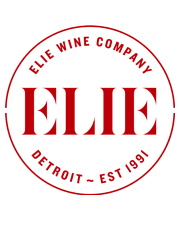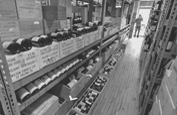Chardonnay of Steel: Unraveling the Mystery of Chablis With Domaine Long-Depaquit’s Enviable Holdings in Six Premier Crus (Pack $349) and Five Grand Crus (Pack $576)
Join Us for Saturday Sips: Chardonnay of Steel
Come as you are; come any time that’s convenient for you during our business hours to sample selection from this week’s selections. Our staff will be on hand to discuss nuances of the wines, the terroirs reflected, and the producers.
When the dog day of summer hit—earlier and earlier, it seems—the elegance and finesse of Chablis, with its unparalleled combination of lively fruit and mineral-driven crispness, is an ideal outdoor companion. Not a porch-pounder by any means, but Chablis may be the ultimate sundeck-sipper.
Chablis’s climate agrees; it’s cooler than most of Burgundy’s Chardonnay country because it’s further north. Its vineyards sweep down from the hillsides neighboring the diminutive namesake village of Chablis (around 100 miles north of Dijon) where Champagne-like terroir, filled with chalk, lends tension and nervy acidity to the wines and produces the mouthwatering quality that refreshes the swampiest days of summer.
This week’s packages take a drive in the convertible through the heart of the best Chablis country—Grand and Premier Crus from Domaine Long-Depaquit, among the most reliable consistent of all producers in the appellation.
Making Chardonnay: Back to The Origins
All Chablis is Chardonnay, but not all Chardonnay is Chablis. That deceptively simple fact belies the multiple faces that this variety adopts in the relatively small confines of Burgundy—incarnations based equally on terroir and tradition. The Côte Chalonnaise and Mâconnais tend to produce balanced, approachable, subtly-oaked Chardonnays that Americans may know best from the 1990s craze of wines from the village of Pouilly-Fuissé.
The Côte d’Or, on the other hand, turbo-charges the concept by producing oaky, complex and long-lived wine. Only the most intensely-flavored fruit can stand up to this style of oak-barrel maturation, but the resulting wines are at the pinnacle of the world’s great whites.
The third style features in this week’s packages, where a cooler climate and northerly latitude barely allows the grapes to ripen, thus ensuring that Chablis makes a leaner style with higher acidity that does not lend itself to intensive oak-aging. As such, these wines are pristine, rarely seeing new oak at all, and only occasionally seeing milder, seasoned barrels to soften some of the electricity.
Chardonnay in Chablis: Acid Trip
Acidity in wine must be handled with the same circumspection as in the laboratory—make a wrong move and you end up with a wincing sting; in either case, it’s a fail. Balance is the key in all things wine, but clearly, wines from more northerly regions face a bigger struggle in balancing ripeness with sharpness, and Chardonnay is the poster-child varietal for ‘If life hands you lemons, make Chablis.’
The line between refreshing tension and acid-reflux may be fine, and one reason that aging Chablis has always been a requirement in Cru versions is that time softens acids and allows the briny, saline-driven savoriness to blossom. Nearly all Chablis undergoes a secondary malolactic fermentation prior to bottling, a technique that transforms malic acid into softer lactic acid and provides a more stable environment. Most Premier and Grand Cru Chablis also see time in neutral oak to further the mellowing process before facing the catwalk of consumption.
What Lies Beneath
“The vineyards of Chablis have a single religion,” writes Jacques Fanet in his book ‘Les Terroirs du Vin’: “Kimmeridgian.”
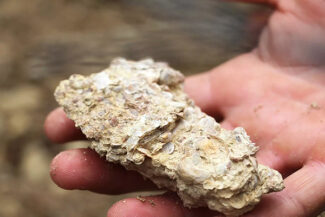
Kimmeridgian limestone marl – courtesy of The Source

Soil in Chablis; big chunks of Portlandian limestone on top with soft Kimmeridian limestone marls underneath.
In the middle of the 18th century, a French geologist working in the south of England identified and named two distinct types of limestone from the Jurassic Era; Portlandian, which he found in Dorset with a layer of dark marl just below it, subsequently named after the nearby village of Kimmeridge. These strata also run across the Channel and through the north of France, where they become a part of the ‘Paris Basin’ and play an indispensable role in creating the soils. A slow geological tilting of this basin allowed the Seine, Aube, Yonne, and Loire rivers to cut through the rising ridges and form an archipelago of wine areas in Champagne, the Loire Valley and ultimately, Burgundy.

Chablis remains the biggest island in the Kimmeridgian chain and it is home to some of the finest Chardonnay terroirs found on earth. The defined region ‘Chablis’ was recognized in 1923 by the Wine Tribunals as requiring a sub-soil of Kimmeridgian limestone while wine grown anywhere else in Chablis would be classed Petit Chablis. The Grand Cru mid-slope in Chablis maps almost perfectly to the Kimmeridgian outcrop, with the soft, carbonate-rich mud rock capped by Portlandian Barrios limestone and supported by Calcares à Astarte, yet another type of limestone.
And now for the interesting part: As vital as Kimmeridgian soil is to the top Cru classifications in Chablis, it is not the primary consideration. Geologic conditions identical to those experienced by the Grand Cru slope extend both northeast and southwest, but the vineyards on those sites are classed as Premier Crus. As a matter of fact, the reference to Kimmeridgian limestone in the definition of Chablis was discontinued in 1976, a tacit admission that slope and orientation are of even greater importance to wine quality.
2020 Vintage: Superb Harvest with Outstanding Aging Potential
In 2020, the problem for Chablis was not reining in grape acid, but retaining it. Like much of Western Europe, Chablis experienced the warmest 12 months on record, warmer even than 2003. This meant an early start to the 2020 growing season and, while there were outbreaks of frost, the damage remained minor, particularly when compared to 2021.
According to Domaine Long-Depaquit’s Matthieu Mangenot, “2020 was a very easy vintage to manage. With a 40% reduction in rainfall and over 300 hours more sunshine than average, there were next to no disease issues in the vineyard. The dry weather even retarded weed outbreaks and this meant little to no spraying was required.”
One of the surprises that has emerged from persistent summer heatwaves brought about by a changing climate is a somewhat unique ability for Chardonnay to adapt without losing its sense of place. 2020 is a case in point, according to Mangenot: “Despite the heat and dryness, the alcohol levels are normal, the acidity levels are exceptional and the overall balance on the palate means the wines are representative of an excellent vintage for the region.”
Domaine Long-Depaquit
Enviable Holdings
At more than 150 acres, Long-Depaquit is one of the largest domains in Chablis, renowned and respected not only for its sprawling terroir but for a commitment to low-intervention, organic farming. In 2014, upon completion of a new winery, the estate has focused on quality improvements centered on earth-friendly approach; in 2019, the property was awarded the highest Level 3 Haute Valeur Environmentale certification.
Beaune-based négociant Albéric Bichot has managed Long-Depaquit since 1967, and the current winemaker, Matthieu Mangenot, joined in 2007, after dual training as an agronomist and an oenologist in South Africa, Lebanon, Bordeaux and especially, Mâconnais and Beaujolais. He has spearheaded the domain’s comprehensive approach to authenticity and sustainability.
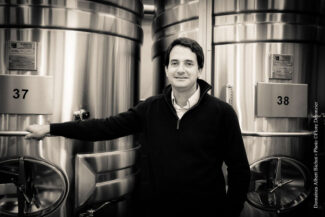
Matthieu Mangenot, Domaine Long-Depaquit
Long-Depaquit produces around 180,000 bottles of Chablis each year, and like most large estates in the region, the lion’s share is village wine fermented and aged in 100% stainless-steel tanks. Wine from their six Premier Cru sites and six Grand Cru sites wines see a small percentage fermented and aged in barrels between two and five years old; Grand Cru Les Clos typically sees a higher percentage (25 to 35%) of oak.
Their flagship cuvée is Grand Cru La Moutonne, drawn from a 5.8 acre monopole vineyard that straddles two Grand Crus (95% in Vaudésir and 5% in Les Preuses) in a steep amphitheater capable of producing some of the richest, most complex wines in Chablis.
The Premier Crus: Structure With Good Length
Domaine Long-Depaquit Premier Cru Package: Six Bottles for $349
Longevity is not only a hallmark of this appellation’s palate sensation: more than half of the climats entitled to wear the ‘Premier Cru’ label had their present-day names by 1429. Chablis Premier Cru represents about 14% of Chablis production, with sites scattered on either side of the Serein River and covering around 2000 acres. As in Bordeaux, where the location of the vineyard compared to the Dordogne and the Garonne determines the style and quality of the wine, the case is similar in Chablis, where left bank wines tend to be more floral and fruit-centered whereas right bank wines are steely and mineral-focused.
Further illuminating the subject is Marc-Emmanuel Cyrot of Domaine Millet, who observes, “The right bank provides complex, well-balanced wines, with a maximum of minerality and vivacity. Those on the left bank are very aromatic, with a less full-bodied character.”

Again, as in Bordeaux, this is the result of soil, topography and exposure to the sun: On the right bank, close to the village, many of the well-known Premier Crus share similar geology, exposition and characteristics with the Grand Crus. To the left of the river, a different style emerges, with many steep-sided vineyards oriented southwest-northeast, east-facing slopes and varying ratios of limestone and clay.
Of the 40 vineyards that fall under the Premier Cru category, 17 are reckoned to be superior, or ‘flag-bearing’ climats. Among these 17, vineyard differences are pronounced and subtle, but with age, the individualism of the respective climats becomes even more apparent.
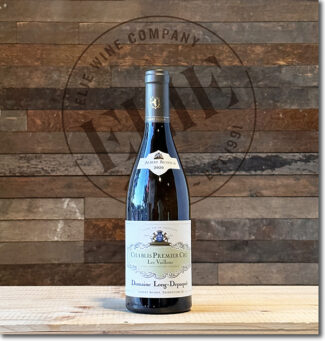 Domaine Long-Depaquit, 2020 Chablis Premier Cru Les Vaillons ($52)
Domaine Long-Depaquit, 2020 Chablis Premier Cru Les Vaillons ($52)
Found in a valley to the southwest of Chablis on the western side of the Serein river, a southeasterly face and high-quality Kimmeridgian soils below meld to make this large climat a sought-after location. At 318 acres, the Vaillons vineyard is made up of eight, smaller climats, all Premier Crus in their own right.
Tensile and incisive, the wine displays classic aromas of crisp green apple, citrus zest, white flowers and oyster shell with racy acids and loads of depth at the core.
 Domaine Long-Depaquit, 2020 Chablis Premier Cru Les Lys ($61)
Domaine Long-Depaquit, 2020 Chablis Premier Cru Les Lys ($61)
Les Lys is a Premier Cru climat within the larger, umbrella Premier Cru vineyard of Vaillons. While contiguous with the latter, Les Lys has a unique aspect, bordering Séchets but facing northeast over the town of Chablis towards the Chablis Grand Cru vineyards; the rest of the Vaillons climats face generally southeast.
A textbook example of how brightly Premier Cru Chablis can shine; grilled pineapple and yellow apple on the nose with a palate of salt-preserved lemon, crushed hazelnut and fruitcake spices.
 Domaine Long-Depaquit, 2020 Chablis Premier Cru Les Beugnons ($56)
Domaine Long-Depaquit, 2020 Chablis Premier Cru Les Beugnons ($56)
Les Beugnons is located at the western extremity of the Valvan valley on the left bank of the Serein River, where the favorable exposure is very favorable for creating expressive and charming wines.
Rich aromatics of pear peel, slight smoke, yeasty lees and candied lemon following through with a juicy palate reminisicent of ripe Mirabelle and a touch of honey.
 Domaine Long-Depaquit, 2020 Chablis Premier Cru Fourchaume ($57)
Domaine Long-Depaquit, 2020 Chablis Premier Cru Fourchaume ($57)
Fourchaume is one of Chablis flagship climats. At 326 acres, it sprawls along the eastern banks of the Serein river where a favorable south-to-southwesterly aspect and high-quality limestone soils beget a distinctive wine with rounded citrus flavors underwritten by fresh minerality.
A crystalline, full-bodied, mineral Chablis with buttery rich notes of ripe apple and sunny Meyer lemon. Tautly-structured with a bracing acidity and a lingering finish.
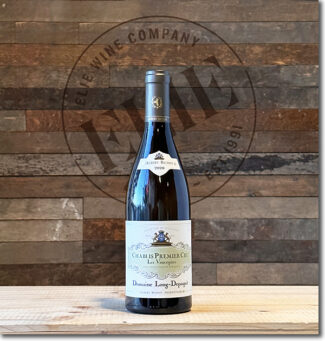 Domaine Long-Depaquit, 2020 Chablis Premier Cru Les Vaucopins ($62)
Domaine Long-Depaquit, 2020 Chablis Premier Cru Les Vaucopins ($62)
Les Vaucopins is found on the right bank of the Serein River in the commune of Chichée, five miles east of Chablis. Its terroir has an uncanny resemblance to the Grand Crus, with southern exposure, steep slopes and numerous Kimmeridgian outcrops.
An elegant and refined wine that displays milk caramel notes behind nuances of oak, there is a hint of sweetness on the palate with flavors of candied fruit, apricot, and quince.
 Domaine Long-Depaquit, 2020 Chablis Premier Cru Montmains ($61)
Domaine Long-Depaquit, 2020 Chablis Premier Cru Montmains ($61)
Another flag-bearing climat, Montmains also encompasses the climats of Butteaux and Forêts to cover approximately 300 acres. With a long, narrow southeast and northeast exposure, Montmains sees early morning sun, but is somewhat colder than nearby climats and usually sees a later harvest.
Lively, chalky, pure and accessible with white pepper, stone and some aniseed with a tight, linear focus, the wine is taut and refined with a wonderful finish.
The Grand Crus: Keeping Potential
Domaine Long-Depaquit Grand Cru Package: Five Bottles for $576
The ne plus ultra in the region, Chablis Grand Cru, represents only about 1% of total Chablis production; it is comprised of seven climats within the commune of Chablis itself and in the hamlets of Fyé and Poinchy on the right bank of the Serein River, which runs to the northeast of the village of Chablis. The names of the vineyards (Blanchot, Bougros, Les Clos, Grenouilles, Preuses, Valmur and Vaudésir) feature prominently on labels due to the distinct characteristics of each, and are found at elevations between 325 and 825 feet for a total of about 250 acres.
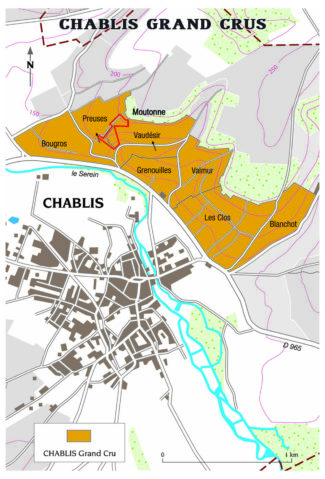
The signature of a Grand Cru Chablis is the perfect balance of fruit-based fattiness and bracing acidity; it is a refreshingly dry wine with nuances based on the individual vineyard, but the common notes to expect include the elusive scent of freshly-sliced mushrooms and a discreet touch of honey. Most impressive in a wine with limited exposure to the preservative qualities of oak is its ability to age and improve, ten years minimum with fifteen years or more well in the realm of possibility. With maturity, the earthiness and nutty-qualities of Grand Cru Chablis increase as forward citrus fruit fades and an intriguing spiciness takes over.
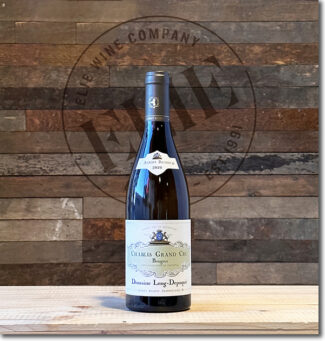 Domaine Long-Depaquit, 2020 Chablis Grand Cru Bougros ($102)
Domaine Long-Depaquit, 2020 Chablis Grand Cru Bougros ($102)
Bougros is located at the northwestern edge of the Grand Cru hillside; it covers nearly 39 acres of slop on the Right Bank of the Serein and tends to produce wines that are considered, rounded and less austere in youth than those from the other Grand Cru climats.
Silky and expressive, the wine offers brioche, toast and ripe green apple with petrol, dried peach and shellfish nuances.
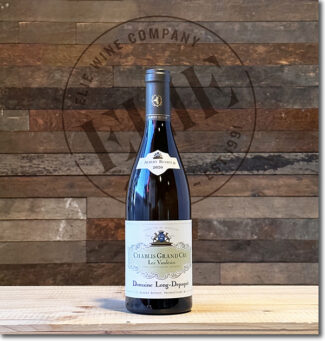 Domaine Long-Depaquit, 2020 Chablis Grand Cru Les Vaudésirs ($127)
Domaine Long-Depaquit, 2020 Chablis Grand Cru Les Vaudésirs ($127)
At the heart of the Grand Cru area, the Vallée des Vaudésirs is a textbook example of the geology and history of Chablis, bearing witness to the erosion that followed the last ice age. Long-Depaquit’s vineyard is more than forty years old, planted in the ‘endroit des Vaudésirs’, where, beneath steady sunshine, Kimmeridgian outcrops are the most numerous.
The wine’s bouquet is redolent of citrus fruit and delicate lily and chamomile notes while the palate offers green apple notes, hint of white peach and a hint of coastal herbs.
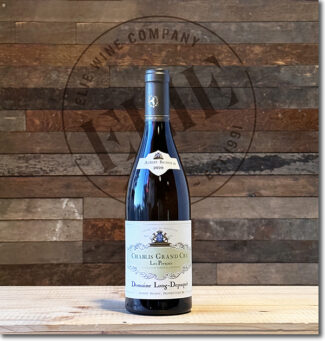 Domaine Long-Depaquit, 2020 Chablis Grand Cru Les Preuses ($110)
Domaine Long-Depaquit, 2020 Chablis Grand Cru Les Preuses ($110)
The 29-acre Preuses slopes continue from those of the Bougros climat at the bottom of the hill, becoming increasingly steep toward the top. At the northern end of the Grand Cru slope, the Kimmeridgian soils and a sunny aspect make for an excellent terroir, but the wines tend to be rich and elegant, if less aromatic than other Chablis Grand Cru wines.
The wine is steely and rich with a gunflint character behind softer floral tones and hazelnut notes.
 Domaine Long-Depaquit, 2020 Chablis Grand Cru Les Clos ($127)
Domaine Long-Depaquit, 2020 Chablis Grand Cru Les Clos ($127)
At 65 acres, Les Clos is by far the biggest Grand Cru climat in Chablis. Its southwest exposure, offering perfect sun, combines with a relatively steep slope to provide optimal ripening conditions. Because of its size, Les Clos’ soil is multi-faceted: towards the top, stones and limestone become more prevalent, whereas towards the bottom, on the contrary, it gets deeper with more clay.
The wine blends two plots and reflects the specificity—the bouquet combines floral notes from the higher of the two plots with almond and hazelnut notes from the mid-slope vineyard.
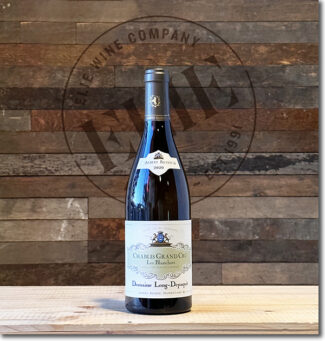 Domaine Long-Depaquit, 2020 Chablis Grand Cru Les Blanchots ($110)
Domaine Long-Depaquit, 2020 Chablis Grand Cru Les Blanchots ($110)
Blanchots provides a unique soil composition, combining typical Chablis Kimmeridgian limestone with ammonites and a layer of white clay. Blanchots takes its name from this white clay. which retains moisture and protects the vines from hydric stress.
The wine shows a floral nose dominated by lilies and white roses; the ample mouth is generous with citrus and stone fruit, leading to mineral fish with hints of flint and graphite.
Chardonnay Finds Valhalla
Chablis Grand Cru ‘Moutonne’
Domaine Long-Depaquit ‘Monopole’
When the Burgundian wine trade refers to a ‘monopole’, it refers to a single defined vineyard area responsible for the production of a single label from a particular producer. La Moutonne is one such vineyard, six acres in size and lying mostly within the Vaudésir Grand Cru, but with a small protrusion into Les Preuses. Owned entirely by Domaine Long-Depaquit, itself owned by Domaines Albéric Bichot, Moutonne faces predominantly south, although with the gentle curve of the hillside, some of the vines face to the southeast. Coupled with a relatively steep gradient that increases sunlight exposure and drainage, the vineyard enjoys a warmer mesoclimate than vineyards lower down the slope.
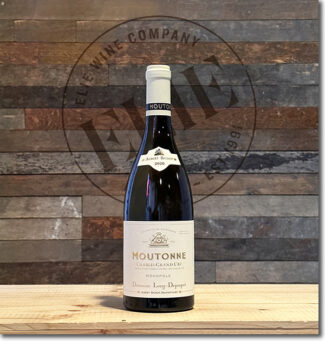 Domaine Long-Depaquit, 2020 Chablis Grand Cru Moutonne ‘Monopole’ ($229)
Domaine Long-Depaquit, 2020 Chablis Grand Cru Moutonne ‘Monopole’ ($229)
25% of this wine sees neutral oak for ten months, then final ageing in stainless steel vats for six months on fine lees. The nose is fleshy with peach and nectarine, with discreet notes of jasmine and violet. Full-bodied and generous with the distinct marly minerality that reflects the micro-terroir, the palate maintains freshness and lightness despite the complexity.
Chablis Grand Cru ‘Les Blanchots’
Domaine Laroche ‘Réserve de l’Obédience’
From its headquarters at the Obédiencerie of Chablis, Laroche celebrates a heritage dating back to the Middle Ages, when the Canons of St. Martin of Tours were making wine. St. Martin’s relics were hidden in the Obédiencerie for a decade and Domaine Laroche still produces and ages its Premier and Grand Crus in these historical cellars.
At well over two hundred acres situated among the top vineyards in Chablis, the estate’s approach to maintaining terroir specificity is unique: Under the direction of Grégory Viennois, the winemaking team designate one team member to each plot who is wholly responsible for the management of that vineyard from pruning and health of the soil to the quality and quantity of fruit yields. According to Viennois, “We tend to be fatalists. If the weather and the climate are not with us, we can do very little, so we have learned to work with the weather. We have rainfall and steep slopes, and this defines our terroir and wine.”
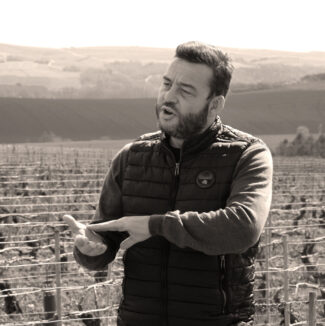
Grégory Viennois, Domaine Laroche
The heralded star in the Laroche portfolio is cuvée Reserve de L’Obédience, which draws the best fruit of the Les Blanchots Grand Cru. The pinnacle of Laroche holdings, Les Blanchots provides a unique terroir made of a layer of white clay on Kimmeridgian limestone with ammonites—an ideal admixture that maintains the optimal amount of water for deep root development. Combined with a southeast exposure, this allows for slow ripening and gradual aroma development slowly, just as the wine requires about five years to fully express itself.
Gilding the Lily 101: We know what to do when life hands us lemons, but when the vineyard hands us Grand Cru crop, the options are interesting. Technical director Grégory Viennois explains the steps involved in creating the Laroche pinnacle, ‘La Réserve de l’Obédience’:
“The grapes are hand-harvested in Grand Cru Les Blanchots and collected in small crates to go to the winery, where they are sorted. Then, each parcel is kept apart in order to do the entire winemaking process separately. Blending of the best wines from Grand Cru Les Blanchots takes place at the beginning of the summer every year—samples are taken from each vat, cask and barrel and are then tasted and selected for their delicacy and silky outlines. The aim is to express in the glass the typicity of the terroir as faithfully as possible. We try to get nearer to the perfect wine if it exists: refined, intense, mineral and capable of maturing for at least twenty years.”
 Domaine Laroche ‘La Réserve de l’Obédience’, 2020 Chablis Grand Cru Les Blanchots ($221)
Domaine Laroche ‘La Réserve de l’Obédience’, 2020 Chablis Grand Cru Les Blanchots ($221)
Regardless of vintage La Réserve de l’Obédience is a delicate and subtle wine that showcases a markedly different style in its youth than in its maturity. Up to five years, the white fruit aromas, the mineral-driven finish and the extraordinary freshness remain front and center. With a few more cellar years, the inherent richness of terroir is expressed at its best and the soft spices and acacia honey notes, still supported by the freshness, emerge to center stage.
NEW ARRIVALS
Saint-Émilion’s White Unicorns
Defining the right bank in Bordeaux is complicated; there are two major rivers and an estuary, and that’s a lot of ‘right bank’. The right bank of the Dordogne covers the traditional red wine enclaves of Saint-Émilion, Pomerol and Fronsac.
Just as with the Médoc , any white wines made here take the Bordeaux Blanc appellation, Vin de France or IPG Vin de l’Atlantique. Known as ‘the land of a thousand châteaux’ (due to an average estate size under 20 acres) white wine remains a relatively scarce commodity in the prestigious estates of Saint-Émilion, as producers struggle to justify charging as high a price for white wines as red. Of the ten ‘right bank’ appellations, including the Saint-Émilion satellites and Lalande de Pomerol, none are applicable to white wines. In Saint-Émilion, white wine is often made ‘off-piste’—from vineyards on the periphery of the appellation itself, but there are some exceptions. Most notable, perhaps, is the estate whose name is more famous than the appellation: Château Cheval Blanc.
Château Cheval Blanc
Château Cheval Blanc is a spectacular tapestry woven from a patchwork of gravel and clay soils that are closely interwoven over 45 parcels. The exceptional terroir originates in the area between Saint-Émilion and Pomerol, where Cabernet Franc and Merlot complement each other and grow in harmony across the estate’s hundred vineyard acres, which attained the supreme distinction of the Premier Grand Cru Classé A classification in 1954—only of only five wine-producing châteaux of right bank Bordeaux to do so.
Cheval Blanc (‘white horse’ in French) has always been a bit iconoclastic; in 1860, before the château itself was even finished, they had added a state-of-the-art drainage system to their vineyards that is still in use today. Adding to that, in Cabernet Sauvignon country, 58% of their vineyards are Cab Franc.
White wines from the château have an interesting origin; the vines were formerly within Château La Tour du Pin Figeac and were purchased in 2006 after La Tour du Pin Figeac lost its classified ranking in Saint-Émilion. Experiments with white wine on a small area began in 2008 as the Cheval Blanc team field-grafted three different clones of Sauvignon Blanc. In the most recent 2012 St-Émilion re-classification, three-and-a-half acres were redrawn to be included within the footprint of Château Cheval Blanc itself, leaving 16 acres for white wines. Today, that vineyard is 80% Sauvignon Blanc and 20% Sémillon.
 Château Cheval Blanc ‘Le Petit Cheval Blanc’, 2020 Bordeaux Blanc ($199)
Château Cheval Blanc ‘Le Petit Cheval Blanc’, 2020 Bordeaux Blanc ($199)
82% Sauvignon Blanc and 18% Sémillon, the 2020 is considered by many to be the estate’s best white wine yet. Still young, but quite drinkable with a bit of aeration with aromas of grapefruit, white peach, lemon zest, tarragon, mandarin blossom, stony flint, and sea spray. Finely-etched acidity and a very long, mineral-driven finish.
Château Vieux Taillefer
Is it possible to have your heart in the cellars of Bordeaux and your hands in the soils of Burgundy? Likely not, but the husband/wife team of Phillipe and Catherine Cohen may come close. With as impressive a Bordelaisian pedigree as exists, they have nonetheless chosen to bottle their Saint‐Émilion red wines based on soil rather than the old hierarchical system normally employed in Bordeaux, a of a ‘First’ and ‘Second’ wine.
As for their background, Catherine was studying oenology when she had an opportunity to intern under the legendary Jean Claude Berrouet, head winemaker at Château Petrus. Recognizing her talent, Jean Claude ultimately put her in charge of La Fleur Petrus, where she made wine from 1995 to 2001. After that, she worked as a consultant for many châteaux throughout Bordeaux.
Phillipe, who spent a decade as a négociant in Saint Émilion, shared her dream of opening a winery, and when the 12-acre Vieux Taillefer estate came on the market, they snapped it up.
Says Phillippe: “The property is perched on the banks of the Dordogne River and planted mostly to Merlot, with a small amount of Cabernet Franc and white varietals as well. The majority of the vines were planted in the 1950s, and when we took official ownership just before the 2006 harvest, we found that they had been tended very well, so the potential to do something great was already here.”
Catherine adds, “All our fruit is hand-harvested and undergoes careful sorting before it is vinified in concrete tanks. The work here is 100% organic, thus there are no chemicals used in the vineyards or the winery. There is no fining or filtration, and we employ no consultants. The aim is to produce wines entirely reflective of a great terroir.”
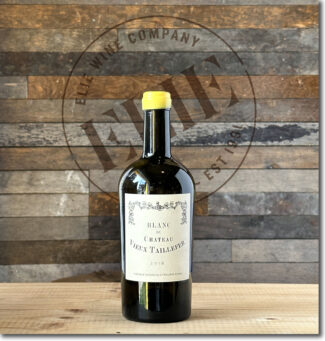 Blanc du Château Vieux Taillefer, 2018 VdF Bordeaux Blanc ($75)
Blanc du Château Vieux Taillefer, 2018 VdF Bordeaux Blanc ($75)
An iconic blend of five grapes. Merlot (the only existing white Merlot vines of the appellation), Sauvignon Blanc, Sémillon, Muscadelle and Chasselas from a plot of 75-year-old vines located in Saint-Christophe des Bardes in the heart of the Saint-Émilion appellation. Vinified and matured in slightly toasted new-oak, 300-liter, cigar-shaped casks. The wine is bottled as Vin de France, or table wine, because the appellation name strictly covers red wine.
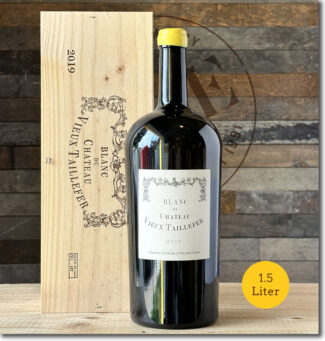 Blanc du Château Vieux Taillefer, 2019 VdF Bordeaux Blanc ($180) en magnum
Blanc du Château Vieux Taillefer, 2019 VdF Bordeaux Blanc ($180) en magnum
Floral notes emerge on first nose, followed by beautiful grapefruit-pith bitterness and a salinity that calls to mind an ocean breeze. This is specific to the great limestone soils where the very best French whites are produced.
- - -
Posted on 2023.06.10 in Chablis, France, Wine-Aid Packages | Read more...
The Champagne Society June 2023 Selection: Champagne Laherte Frères
Champagne Laherte Frères
The Talented Aurélien Laherte’s
‘Quest for The Perfect Alchemy’

Due to the limited quantities of each cuvée members will be assigned one of the following four cuvées:
Champagne Laherte Frères ‘Les Longue Voyes’, 2018 Chamery Premier Cru Blanc de Noirs Extra-Brut ($83)
OR
Champagne Laherte Frères ‘Les Vignes d’Autrefois’, 2018 Chavot & Mancy Extra-Brut ($83)
OR
Champagne Laherte Frères ‘Les Empreintes’, 2016 Chavot Extra-Brut ($87)
OR
Champagne Laherte Frères ‘Les Beaudiers’, nv Chavot Extra-Brut Rosé de Saignée ($83)
The traditions of Champagne makers may seem bedrock, but as time folds new players into the mix, those traditions are in constant flux. Some fall out of fashion, only to be revived by a newer generation. Aurélien Laherte, who took over Laherte Frères of Chavot in 2005, and gave a new dimension to the estate, replanting heritage varieties and moving toward organic and sustainable agriculture. Aurélien says, “We began experimenting with cover crops and higher canopies, and updating the winery facilities. Our vins clairs are now vinified in tank, foudre and barrel—the latter purchased used from Beaune’s Benjamin Leroux, and the wines are minimally dosed and closed with Diam Mytik corks, of which we were early adopters.”
The result is clear, chiseled Champagnes that are created with the sole intention of reflecting the nuances of the plot in which they originate. The estate, with 75 parcels situated in three distinct areas (the southern slopes of Épernay, the Côte des Blancs, and the Marne Valley) is centered in the village of Chavot in the Côteaux Sud d’Epernay. They produce around 150,000 bottles a year, and this week’s offering contains a cross-section of the most outstanding.
The Coteaux Sud d’Épernay: Between Two Giants
The Coteaux Sud d’Épernay is Pinot Meunier-rich, with 47% of its 3000 acres planted to this variety, which is sometimes imagined as an ‘also ran’ in Champagne. In fact, Meunier is suited for soils that contain more clay and in terroirs with harsher climatic conditions since it buds late and makes it more resistant to frost. Sandwiched between the powerhouse wine regions Côte des Blancs and Vallée de la Marne, the Coteaux has an identity removed from either one; its terroir is distinctly different from the clay-heavy soils of the Marne and lacks the chalk of that puts the ‘blanc’ in the Côte des Blancs.

Phrasing it succinctly is Laherte Frères proprietor Aurélien Laherte: “Our wines show more clay influence than those of the Côte des Blancs and they are chalkier than the wines of the Vallée de la Marne.”
In short, these Champagnes are uniquely situated to offer the best of both worlds. As a result, the Coteaux Sud d’Épernay has long fought for recognition as entity unto itself, not necessarily a sub-region of its big brothers on either side.
Champagne Laherte Frères
Terroir Fundamentals: Preserving Its Details
That Champagne is, above all, a style of wine should be obvious, but a common misinterpretation (fueled in part by tradition and in part by marketing) removes it from viniculture and places it on a pedestal of the imagination. Nothing wrong with this, of course, so long as the ground floor remains intact.
Aurélien Laherte, along with his high school friend Raphael Bérèche, would like to see these ideas put into context. A group of Champagne’s more progressive producers, including Agrapart, Marie-Courtin, Vincent Laval and Benoît Lahaye, gathers each spring to taste the ‘vins clairs’—wines meant to become Champagne, but having not yet undergone the bubble-creation process. These are not necessarily ‘still wines’ in that they are not meant to stand on their own merits, but have terroir-transparency profiles to make them suitable for top-shelf sparkling versions.
The Laherte stamp-of-approval was placed on Champagne’s brow many years ago: Founded in 1889 by Jean-Baptiste Laherte, the estate was originally made up of vines grown in and about the village of Chavot. With his wife Cécile, fourth-generation vigneron Michel Laherte expanded the holding, modernized the press and tanks, and may be credited with realizing that the use of herbicides and pesticides prevents full terroir-expression in the wines. The philosophy of hand-working the soils, gently vinifying the juices, and remaining humble and patient as the wines develop became the foundational theme of the estate and endures to this day.
Situated largely in the Côteaux Sud D’Épernay, Laherte vineyards themselves total 26 acres subdivided into 75 separate parcels. Seven of these are farmed biodynamically and certified organic, with the rest farmed either ‘uncertified organic’ or sustainably. Each produces detailed wines that the estate seeks to showcase individually.

Aurélien Laherte, Champagne Laherte Frères
Aurélien Laherte took over in 2005 and is today considered to be one of the most dynamic vignerons in the appellation. From the multiple individual parcels, the estate produces a series of tiny production, single-vineyard, single-vintage cuvées (around 3,000 bottles each) from some of their most unique and expressive biodynamically-farmed parcels. Many of these wines are fermented and aged in used Burgundy barrels, without malolactic, and are bottled without fining and filtration. They are then finished with little or no dosage so as to not mask the individuality of the underlying terroirs.
Aurélien and his parents are registered as a négociant all the fruit grown by an extended family can be incorporated into his blends. “This is,” says, “the best way to contend with complicated French inheritance laws and keep the estate whole.”
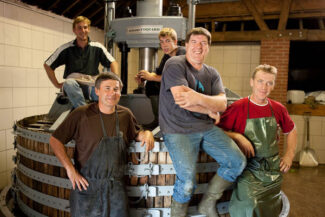
The team, Aurélien upper left
Great lengths are taken to ensure each vine fully expresses itself and its underlying terroir. A team of ten, including aunts, uncles, and cousins, works throughout the year (in accordance with the lunar calendar) to employ techniques such as plant infusions to improve the vine’s natural defense system, and high foliage to encourage photosynthesis and thus, balanced maturity.
Village Chavot: Diversity of Soil
The commune of Chavot-Courcourt consists of Chavot (in the northeastern part of the commune) and Courcourt (in the central part of the commune), but also the small villages Ferme du Jard, Les Fleuries, La Grange au Bois, and Le Pont de Bois. Among the many folds and hills in the area, the upper reaches are clay-dominant while the soils turn chalkier as you descend. Most of the vineyards in Chavot-Courcourt are located in the northern part of the commune, on slopes formed by the stream Le Cubry.
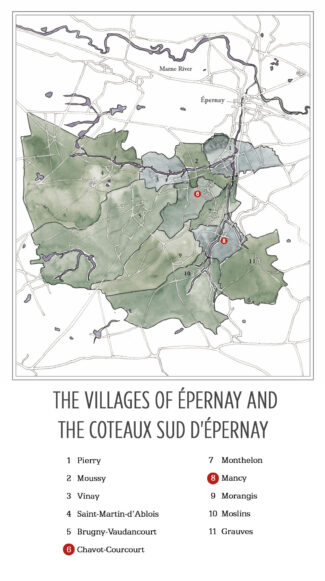
Aurélien Laherte explains why he farms so many individual parcels in a relatively small area: “Below the village especially is a significant difference in soil types. I have identified 27 terroir-types in Chavot-Courcourt alone and farm 45 parcels. There is no sand, but there is virtually everything else—from chalk to clay to limestone. Between them are countless fine-grained distinctions, so I treat them individually and vinify them separately.”
Les Beaudiers is a vineyard in Chavot where Laherte Frères has old vines of Meunier (planted in 1953, 1958, and 1965) that are used for a rosé saignée. Other vineyard sites in Chavot-Courcourt include Les Charmées, Les Chemins d’Epernay, Les Monts Bougies, Les Noelles, La Potote, and Les Rouges Maison, all used by Laherte Frères for their Champagnes Les Vignes d’Autrefois and Les Empreintes.
Although Meunier is the dominant grape variety, Laherte also owns a vineyard called ‘Les Clos’ where he plants all seven legally allowable Champagne grape varieties. From this he concocts the individual-vinification philosophy by picking and pressing all seven varieties together.
Single Variety (Monocépage): Burgundy Comes to Champagne
Bordeaux, and indeed much of Champagne, blends grape varieties to create signature ‘house’ wines. In Burgundy, the thinking is different: Burgundies are primarily monocépages, meaning they are made from a single grape variety, often sourced from a single vineyard. In Bordeaux, the monocépage concept is virtually unknown, but in Champagne, most prominent producers will offer at least one or two in their portfolio, Blanc de Noir or Blanc de Blanc. Frequently they are vintage cuvée produced only in years where a special set of conditions are met and only released in limited quantities.
• Blanc de Blancs
Blanc de Blancs—a term found only in Champagne—used to refer to Champagne produced entirely from white grapes, most commonly Chardonnay. Pinot Blanc and Arbanne can also be used, as well as a number of other varieties permitted in the appellation, but these are much less common.
Chardonnay – ‘Emblematic Cuvée’
In Chardonnay Muscaté this mutation of Chardonnay is a genuine thing; it is grown somewhat extensively in New York state and Ontario under the name Chardonnay Musque and shows an exotic flavor profile that includes tropical fruit notes and cinnamon-tinged lemon sorbet.
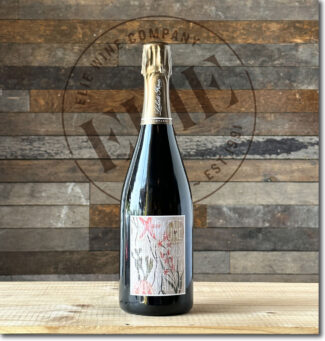 Champagne Laherte Frères, nv Chavot & Épernay ‘Blanc de Blancs’ Brut-Nature ($53)
Champagne Laherte Frères, nv Chavot & Épernay ‘Blanc de Blancs’ Brut-Nature ($53)
From the chalkiest soils on the south slopes of Épernay and the Côte des Blancs, where Chardonnay vines average 35 years, Laherte hand-picks the grapes and ferments the juice in small foudres and barrels, relying on few bâtonnages. It is assembled using 50% reserve wines from previous vintages aged in barrels on lees; hence, the non-vintage label. Malolactic fermentation is partial and disgorgement is done by hand, without dosage. As a ‘non-dosé’, the wine is filled with shivery acidity, showing citrus and apple peel with accents of ginger and finishing with crushed rock minerality. Disgorged February 2022.
*click on photo for more info
Petit Meslier – ‘Vibrant and Expressive’
Petit Meslier is a somewhat rare white-wine grape grown in small quantities in Champagne. It is noted for its heat resistance and ability to maintain acids during long spells of hot weather and when vinified as a monocépage, provides tremendous aromatic intensity and depth.
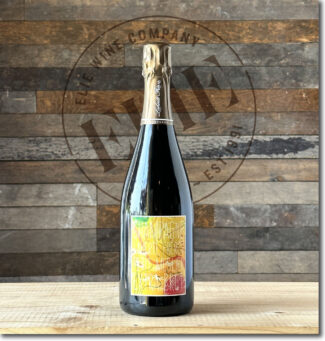 Champagne Laherte Frères ‘Petit Meslier’, nv Chavot Extra-Brut ($120)
Champagne Laherte Frères ‘Petit Meslier’, nv Chavot Extra-Brut ($120)
In creating his iconic, all-inclusive blend ‘Les 7’, Aurélien was particularly struck by the ability of his Petit Meslier to stand on its own. From a vineyard called ‘Cépages Oubliés’, it is blended with 40% reserve wine and aged for six months on its lees ‘fût de chêne’, or in oak barrels; it shows honeyed pear, buttered toast and toasted almonds behind an unsurprisingly racy spine of acidity. Disgorged December 2021.
• Blanc de Noirs
In Champagne, Blanc de Noirs mean that the wine is made from either Pinot Noir or Meunier (or a blend of the two), although it’s relatively common to find 100% Pinot Noir. Despite the ‘Noir’, they may be notably ‘Blanc’ since both Pinot Noir and Meunier are red-skinned, white-fleshed grapes that produce clear juice. Without being given time to macerate on the dark skins, the wine will be white.
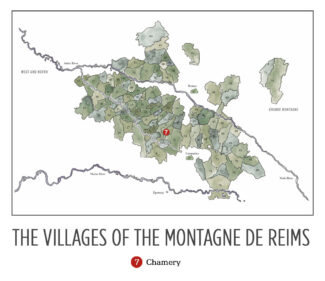
Pinot Noir – ‘Intense and Straight’
Pinot Noir accounts for 38% of the area under vine in Champagne and is the dominant grape in Montagne de Reims and Côte des Bar. It is frequently referred to as ‘Précoce’ due to its tendency to ripen early, leaving behind the acidity so prized by Champagne makers. It thrives in cool, chalky soil—a hallmark of Champagne’s terroir.
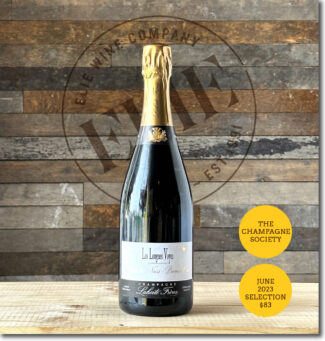 Champagne Laherte Frères ‘Les Longue Voyes’, 2018 Montagne de Reims (Premier Cru Chamery) Blanc de Noirs Extra-Brut ($83)
Champagne Laherte Frères ‘Les Longue Voyes’, 2018 Montagne de Reims (Premier Cru Chamery) Blanc de Noirs Extra-Brut ($83)
Part of Aurélien Laherte’s’ Terroirs’ series, this is his first Blanc de Noirs Champagne made entirely from Pinot Noir. The fruit comes from the village of Chamery on the Petite Montagne de Reims, nearly twenty miles from the estate—hence the name, which means ‘The Long Way’. Barrel aged for 18 months with a 4 g/l dosage and no malolactic, the nose reveals notes of black fruits, and the palate is lively, tense, tasty and tonic with a persistent saline finish. Disgorged December 2021.
*click on photo for more info
Meunier – ‘Celebrating the Variety’
Traditionally used as a blending grape, there are about 26,000 acres of Meunier planted in Champagne, and the variety is rapidly becoming more than an afterthought used for color and balance. In the right soil conditions (calcareous clay with deeper chalk layers) and if allowed to ripen well (leapfrogging the vegetal stage) it can produce a wine that ages remarkably, showing finesse and freshness even after years in the bottle.
 Champagne Laherte Frères ‘Les Vignes d’Autrefois’, 2018 Chavot & Mancy Extra-Brut ($83)
Champagne Laherte Frères ‘Les Vignes d’Autrefois’, 2018 Chavot & Mancy Extra-Brut ($83)
The selected Meunier plots for this wine were planted by the Laherte family between 1947 and 1953 in the villages of Chavot (lieux-dits La Potote and Les Rouges Maisons) and Mancy (lieu-dit Les Hautes Norgeailles). Some of the vines were planted on French rootstock while others are the result of old massal selection. Aurélien uses traditional wooden Coquard presses; fermentation occurs with native yeast in old Burgundy barrels and malolactic fermentation does not take place. The wine ages up to 19 months on the lees and dosage is between two and four grams per liter; it exhibits marvelous aromas of white peach, violets and verbena. Disgorged November 2021.
*click on photo for more info
• Rosé
Credit Madame Clicquot for revolutionizing the (then) relatively small production of pink Champagne. A believer in the idea that a wine should flatter both the eye and the palate, the Grande Dame broke with tradition and re-created the process of making rosé champagne. Before, it was made by adding an elderberry-based mixture to white champagne, but Madame Clicquot had had vines in the Bouzy region of Champagne where she made her own red wine, and she decided to blend this with her still white wines.
This is the most common method of producing rosé Champagne—blending clear white and black grape musts, using between 5 and 15% red wine; it is called a rosé of ‘assembly’. The proportion of red wine can vary, but the white wine must be the majority. Another method of rosé production is the ‘saignée’ method, which involves allowing the must to undergo minimal skin contact, generally for only a couple of hours. This minimal maceration allows the must to develop stronger aromas and flavor profiles while deepening the color. ‘Saignée’ translates literally to ‘bleeding’, which is essentially what the skins are doing for the juice.
Meunier – ‘Strong Identity’
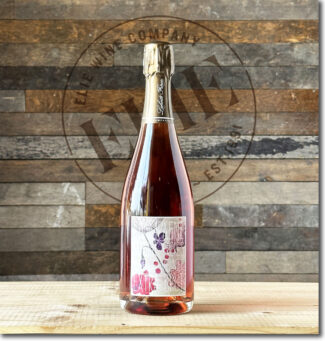 Champagne Laherte Frères ‘Rosé de Meunier’, nv Chavot & Vallée de la Marne (Le Breuil & Boursault) Extra-Brut Rosé d’Assemblage ($54)
Champagne Laherte Frères ‘Rosé de Meunier’, nv Chavot & Vallée de la Marne (Le Breuil & Boursault) Extra-Brut Rosé d’Assemblage ($54)
100% Meunier, the wine is sourced from vineyards in Chavot and Vallée de la Marne (lieux-dits Le Breuil and Boursault) with an average age of 25 years for the Meunier vinified white and more than 40 years for the parcels selected for the red wine. It is a blend of 30% macerated Meunier, 60% white wine from Meunier and 10% still red Meunier. As a result, it uses both methods of Champagne rosé creation, assemblage (blending) and saignée (bleeding). The wine is multi-layered with a ripe core of red fruit and brisk girdling acids. Disgorged March 2022.
*click on photo for more info
Meunier – ‘Varietal Complexity and Nuances’
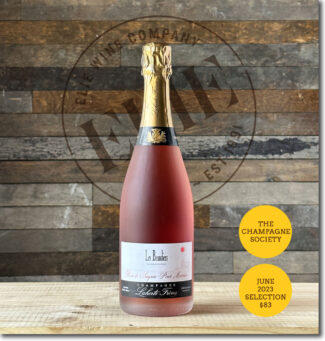 Champagne Laherte Frères ‘Les Beaudiers’, nv Chavot Extra-Brut Rosé de Saignée ($83)
Champagne Laherte Frères ‘Les Beaudiers’, nv Chavot Extra-Brut Rosé de Saignée ($83)
100% Meunier from the ‘Les Beaudiers’ lieu-dit, planted in 1953, 1958 and 1965 on shallow clay and silty soil with chalk beneath. As always, Laherte’s methods include organic maintenance, short pruning for a limited production and regular ploughing. Fermentation takes place in old Burgundy barrels and hand-disgorgement with 0 to 4.5 g/l. The wine shows creamy red cherries, kirsch, buttered toast with strawberry jam and a bright, flinty spine. Disgorged November 2021.
*click on photo for more info
Blending: A Tapestry of Few Threads
Champagne should illustrate the word ‘synergy’ above all, where the sum of the total is greater than the individual parts. The ideal blend should be the aggregation of positive components; every thread should add to the tapestry’s whole. The blend should always drive toward harmony; Chardonnay is often up front, while Pinot Noir supplies the middle and finish. Other allowable varietals should only appear if they contribute to the primary blend.
This is not a universal outcome, of course, and according to Jean-Marc Lallier of Champagne Deutz, “Some winemakers do not blend; they mix.”
When cellar masters do it right, it is a painstaking undertaking; every tank, barrel and vat is tasted countless times to assess which batch would enhance which. This is the true art of Champagne making—the intimate familiarity with each component in order to align them perfectly.
At Laherte, Aurélien does not have a recipe for a single wine; he blends according to the call from the barrel and each blend has a trademark distinction. He prefers very low dosage, insisting that the wine’s minerality must speak first. Regarding the tedious art of blending, he says, “They’re like people; one needs to be strong, one of them weak; one bitter, one elegant.”
‘Highlighting Chavot’s Terroir’
 Champagne Laherte Frères ‘Les Empreintes’, 2016 Chavot Extra-Brut ($87)
Champagne Laherte Frères ‘Les Empreintes’, 2016 Chavot Extra-Brut ($87)
From two parcels in the Chavot lieux-dits Les Chemins d’Épernay and Les Rouges Maisons, each (in Aurélien’s words) ‘exemplifying the quintessence of the Chavot terroir.’ The wine is a classic Champagne blend, half Chardonnay, (of which one-third is Chardonnay Muscaté) from Les Chemins d’Epernay where there are clay soils with a little silt stratum in surface and a chalky subsoil—vines planted in 1957. The other half is Pinot Noir from Les Rouges Maison where the soil is fairly deep with a vital presence of clay, flints and schists; these vines were planted in 1983. With a dosage of 3.5 g/l, it is a resonant Champagne with floral top notes and deftly balanced acidity. Disgorged January 2021.
*click on photo for more info
‘Return to Basics’
 Champagne Laherte Frères ‘Ultradition’, nv Extra-Brut ($48)
Champagne Laherte Frères ‘Ultradition’, nv Extra-Brut ($48)
60% Meunier, 30% Chardonnay, 10% Pinot Noir from vineyard plots in the Côteaux Sud d’Épernay, Vallée de la Marne and Côte des Blancs where vines average around 30 years. The wine ages in barrels for six months and given light filtration before bottling during the spring time; 6-8 gr/l dosage. The wine offers a complex bouquet of dried apple and toasted walnut; the Meunier lends floral tones and an upper-register smokiness. Disgorged November 2021.
*click on photo for more info
‘Tribute to Yesterday’s Wines’
The system of maturation used for Sherry, the famous fortified wine of Jerez, is a cry for consistency from vintage to vintage. The soléra (or perpetual cuvée) system involves removing wine for release from the last of a series of barrels that contains a blend of every vintage since the solera was started. The void in those barrels is then filled with wine from another series of barrels, and so on, until there is room in the youngest series of barrels. The wine from the most recent vintage is added to those barrels.
In Champagne, the method used is slightly different; after each harvest, wine is added to the blend, and every time a producer is ready to release a new batch of non-vintage Champagne, he/she removes what he/she needs. Over time, the cuvée becomes increasingly complex as the fresh wines of the latest vintage taking on the mature qualities of those that came before it. It is a system used by surprisingly few producers in Champagne, but Laherte Frères is one of them.
 Champagne Laherte Frères ‘Les 7’ Soléra 2005 to 2018, nv Chavot Extra-Brut ($120)
Champagne Laherte Frères ‘Les 7’ Soléra 2005 to 2018, nv Chavot Extra-Brut ($120)
As the name suggests, all seven allowable Champagne grapes are used in this single cuvée; 10% Fromenteau,18% Chardonnay, 18% Meunier, 15% Petit Meslier, 8% Arbanne, 14% Pinot Noir and 17% Pinot Blanc from a vineyard planted by Thierry Laherte in 2003. He picks and presses all seven together and employs his perpetual cuvée: ‘Les 7’ contains wine not only from the current vintage, but draws bits of reserve wine from all harvests dating back to 2005, the year Aurélien took over the domain. All bottles are disgorged by hand with a dosage of 3 g/l. The wine shows lemon zest, crystalline green-apple candy and floral notes in a stony infrastructure. Disgorged January 2021.
*click on photo for more info
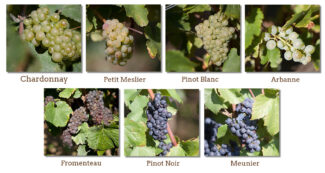
- - -
Posted on 2023.06.01 in France, Saturday Sips Wines, The Champagne Society, Champagne, Wine-Aid Packages | Read more...
When to Blend … or Not. The Talented Aurélien Laherte’s ‘Quest for The Perfect Alchemy’ in Champagne’s Coteaux Sud d’Épernay + Saturday Sips
Join Us for Saturday Sips: Beaujonomie By Beaujolais
Beaujonomie is a portmanteau, a likely blend of ‘Beaujolais’ and ‘bonhomie’—or perhaps it’s ‘gastronomie’. Either way, it’s ironic, because in Beaujolais, blends are rare, and for the most part, Gamay is what you see and Gamay what you get. But the soul of Beaujolais is easy and fun, and ‘Beaujonomie’ encapsulates the light, warm-season feel that a cool glass of Beaujolais brings to the summer table. The French celebrate a festival of Beaujonomie for three days in June; our celebration begins this Saturday with a Beaujolais tasting. Join us during business hours for a sample of an old favorite or a new discovery.
The traditions of Champagne makers may seem bedrock, but as time folds new players into the mix, those traditions are in constant flux. Some fall out of fashion, only to be revived by a newer generation. Aurélien Laherte, who took over Laherte Frères of Chavot in 2005, and gave a new dimension to the estate, replanting heritage varieties and moving toward organic and sustainable agriculture. Aurélien says, “We began experimenting with cover crops and higher canopies, and updating the winery facilities. Our vins clairs are now vinified in tank, foudre and barrel—the latter purchased used from Beaune’s Benjamin Leroux, and the wines are minimally dosed and closed with Diam Mytik corks, of which we were early adopters.”
The result is clear, chiseled Champagnes that are created with the sole intention of reflecting the nuances of the plot in which they originate. The estate, with 75 parcels situated in three distinct areas (the southern slopes of Épernay, the Côte des Blancs, and the Marne Valley) is centered in the village of Chavot in the Côteaux Sud d’Epernay. They produce around 150,000 bottles a year, and this week’s offering contains a cross-section of the most outstanding.
The Coteaux Sud d’Épernay: Between Two Giants
The Coteaux Sud d’Épernay is Pinot Meunier-rich, with 47% of its 3000 acres planted to this variety, which is sometimes imagined as an ‘also ran’ in Champagne. In fact, Meunier is suited for soils that contain more clay and in terroirs with harsher climatic conditions since it buds late and makes it more resistant to frost. Sandwiched between the powerhouse wine regions Côte des Blancs and Vallée de la Marne, the Coteaux has an identity removed from either one; its terroir is distinctly different from the clay-heavy soils of the Marne and lacks the chalk of that puts the ‘blanc’ in the Côte des Blancs.

Phrasing it succinctly is Laherte Frères proprietor Aurélien Laherte: “Our wines show more clay influence than those of the Côte des Blancs and they are chalkier than the wines of the Vallée de la Marne.”
In short, these Champagnes are uniquely situated to offer the best of both worlds. As a result, the Coteaux Sud d’Épernay has long fought for recognition as entity unto itself, not necessarily a sub-region of its big brothers on either side.
Champagne Laherte Frères
Terroir Fundamentals: Preserving Its Details
That Champagne is, above all, a style of wine should be obvious, but a common misinterpretation (fueled in part by tradition and in part by marketing) removes it from viniculture and places it on a pedestal of the imagination. Nothing wrong with this, of course, so long as the ground floor remains intact.
Aurélien Laherte, along with his high school friend Raphael Bérèche, would like to see these ideas put into context. A group of Champagne’s more progressive producers, including Agrapart, Marie-Courtin, Vincent Laval and Benoît Lahaye, gathers each spring to taste the ‘vins clairs’—wines meant to become Champagne, but having not yet undergone the bubble-creation process. These are not necessarily ‘still wines’ in that they are not meant to stand on their own merits, but have terroir-transparency profiles to make them suitable for top-shelf sparkling versions.
The Laherte stamp-of-approval was placed on Champagne’s brow many years ago: Founded in 1889 by Jean-Baptiste Laherte, the estate was originally made up of vines grown in and about the village of Chavot. With his wife Cécile, fourth-generation vigneron Michel Laherte expanded the holding, modernized the press and tanks, and may be credited with realizing that the use of herbicides and pesticides prevents full terroir-expression in the wines. The philosophy of hand-working the soils, gently vinifying the juices, and remaining humble and patient as the wines develops became the foundational theme of the estate and endures to this day.
Situated largely in the Côteaux Sud D’Épernay, Laherte vineyards themselves total 26 acres subdivided into 75 separate parcels. Seven of these are farmed biodynamically and certified organic, with the rest farmed either ‘uncertified organic’ or sustainably. Each produces detailed wines that the estate seeks to showcase individually.

Aurélien Laherte, Champagne Laherte Frères
Aurélien Laherte took over in 2005 and is today considered to be one of the most dynamic vignerons in the appellation. From the multiple individual parcels, the estate produces a series of tiny production, single-vineyard, single-vintage cuvées (around 3,000 bottles each) from some of their most unique and expressive biodynamically-farmed parcels. Many of these wines are fermented and aged in used Burgundy barrels, without malolactic, and are bottled without fining and filtration. They are then finished with little or no dosage so as to not mask the individuality of the underlying terroirs.
Aurélien and his parents are registered as a négociant all the fruit grown by an extended family can be incorporated into his blends. “This is,” says, “the best way to contend with complicated French inheritance laws and keep the estate whole.”

The team, Aurélien upper left
Great lengths are taken to ensure each vine fully expresses itself and its underlying terroir. A team of ten, including aunts, uncles, and cousins, works throughout the year (in accordance with the lunar calendar) to employ techniques such as plant infusions to improve the vine’s natural defense system, and high foliage to encourage photosynthesis and thus, balanced maturity.
Village Chavot: Diversity of Soil
The commune of Chavot-Courcourt consists of Chavot (in the northeastern part of the commune) and Courcourt (in the central part of the commune), but also the small villages Ferme du Jard, Les Fleuries, La Grange au Bois, and Le Pont de Bois. Among the many folds and hills in the area, the upper reaches are clay-dominant while the soils turn chalkier as you descend. Most of the vineyards in Chavot-Courcourt are located in the northern part of the commune, on slopes formed by the stream Le Cubry.

Aurélien Laherte explains why he farms so many individual parcels in a relatively small area: “Below the village especially is a significant difference in soil types. I have identified 27 terroir-types in Chavot-Courcourt alone and farm 45 parcels. There is no sand, but there is virtually everything else—from chalk to clay to limestone. Between them are countless fine-grained distinctions, so I treat them individually and vinify them separately.”
Les Beaudiers is a vineyard in Chavot where Laherte Frères has old vines of Meunier (planted in 1953, 1958, and 1965) that are used for a rosé saignée. Other vineyard sites in Chavot-Courcourt include Les Charmées, Les Chemins d’Epernay, Les Monts Bougies, Les Noelles, La Potote, and Les Rouges Maison, all used by Laherte Frères for their Champagnes Les Vignes d’Autrefois and Les Empreintes.
Although Meunier is the dominant grape variety, Laherte also owns a vineyard called ‘Les Clos’ where he plants all seven legally allowable Champagne grape varieties. From this he concocts the individual-vinification philosophy by picking and pressing all seven varieties together.
Single Variety (Monocépage): Burgundy Comes to Champagne
Bordeaux, and indeed much of Champagne, blends grape varieties to create signature ‘house’ wines. In Burgundy, the thinking is different: Burgundies are primarily monocépages, meaning they are made from a single grape variety, often sourced from a single vineyard. In Bordeaux, the monocépage concept is virtually unknown, but in Champagne, most prominent producers will offer at least one or two in their portfolio, Blanc de Noir or Blanc de Blanc. Frequently they are vintage cuvée produced only in years where a special set of conditions are met and only released in limited quantities.
• Blanc de Blancs
Blanc de Blancs—a term found only in Champagne—used to refer to Champagne produced entirely from white grapes, most commonly Chardonnay. Pinot Blanc and Arbanne can also be used, as well as a number of other varieties permitted in the appellation, but these are much less common.
Chardonnay – ‘Emblematic Cuvée’
In Chardonnay Muscaté this mutation of Chardonnay is a genuine thing; it is grown somewhat extensively in New York state and Ontario under the name Chardonnay Musque and shows an exotic flavor profile that includes tropical fruit notes and cinnamon-tinged lemon sorbet.
 Champagne Laherte Frères, nv Chavot & Épernay ‘Blanc de Blancs’ Brut-Nature ($53)
Champagne Laherte Frères, nv Chavot & Épernay ‘Blanc de Blancs’ Brut-Nature ($53)
From the chalkiest soils on the south slopes of Épernay and the Côte des Blancs, where Chardonnay vines average 35 years, Laherte hand-picks the grapes and ferments the juice in small foudres and barrels, relying on few bâtonnages. It is assembled using 50% reserve wines from previous vintages aged in barrels on lees; hence, the non-vintage label. Malolactic fermentation is partial and disgorgement is done by hand, without dosage. As a ‘non-dosé’, the wine is filled with shivery acidity, showing citrus and apple peel with accents of ginger and finishing with crushed rock minerality. Disgorged February 2022.
*click on photo for more info
Petit Meslier – ‘Vibrant and Expressive’
Petit Meslier is a somewhat rare white-wine grape grown in small quantities in Champagne. It is noted for its heat resistance and ability to maintain acids during long spells of hot weather and when vinified as a monocépage, provides tremendous aromatic intensity and depth.
 Champagne Laherte Frères ‘Petit Meslier’, nv Chavot Extra-Brut ($120)
Champagne Laherte Frères ‘Petit Meslier’, nv Chavot Extra-Brut ($120)
In creating his iconic, all-inclusive blend ‘Les 7’, Aurélien was particularly struck by the ability of his Petit Meslier to stand on its own. From a vineyard called ‘Cépages Oubliés’, it is blended with 40% reserve wine and aged for six months on its lees ‘fût de chêne’, or in oak barrels; it shows honeyed pear, buttered toast and toasted almonds behind an unsurprisingly racy spine of acidity. Disgorged December 2021.
• Blanc de Noirs
In Champagne, Blanc de Noirs mean that the wine is made from either Pinot Noir or Meunier (or a blend of the two), although it’s relatively common to find 100% Pinot Noir. Despite the ‘Noir’, they may be notably ‘Blanc’ since both Pinot Noir and Meunier are red-skinned, white-fleshed grapes that produce clear juice. Without being given time to macerate on the dark skins, the wine will be white.

Pinot Noir – ‘Intense and Straight’
Pinot Noir accounts for 38% of the area under vine in Champagne and is the dominant grape in Montagne de Reims and Côte des Bar. It is frequently referred to as ‘Précoce’ due to its tendency to ripen early, leaving behind the acidity so prized by Champagne makers. It thrives in cool, chalky soil—a hallmark of Champagne’s terroir.
 Champagne Laherte Frères ‘Les Longue Voyes’, 2018 Montagne de Reims (Premier Cru Chamery) Blanc de Noirs Extra-Brut ($83)
Champagne Laherte Frères ‘Les Longue Voyes’, 2018 Montagne de Reims (Premier Cru Chamery) Blanc de Noirs Extra-Brut ($83)
Part of Aurélien Laherte’s’ Terroirs’ series, this is his first Blanc de Noirs Champagne made entirely from Pinot Noir. The fruit comes from the village of Chamery on the Petite Montagne de Reims, nearly twenty miles from the estate—hence the name, which means ‘The Long Way’. Barrel aged for 18 months with a 4 g/l dosage and no malolactic, the nose reveals notes of black fruits, and the palate is lively, tense, tasty and tonic with a persistent saline finish. Disgorged December 2021.
*click on photo for more info
Meunier – ‘Celebrating the Variety’
Traditionally used as a blending grape, there are about 26,000 acres of Meunier planted in Champagne, and the variety is rapidly becoming more than an afterthought used for color and balance. In the right soil conditions (calcareous clay with deeper chalk layers) and if allowed to ripen well (leapfrogging the vegetal stage) it can produce a wine that ages remarkably, showing finesse and freshness even after years in the bottle.
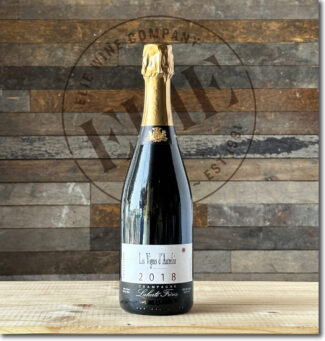 Champagne Laherte Frères ‘Les Vignes d’Autrefois’, 2018 Chavot & Mancy Extra-Brut ($83)
Champagne Laherte Frères ‘Les Vignes d’Autrefois’, 2018 Chavot & Mancy Extra-Brut ($83)
The selected Meunier plots for this wine were planted by the Laherte family between 1947 and 1953 in the villages of Chavot (lieux-dits La Potote and Les Rouges Maisons) and Mancy (lieu-dit Les Hautes Norgeailles). Some of the vines were planted on French rootstock while others are the result of old massal selection. Aurélien uses traditional wooden Coquard presses; fermentation occurs with native yeast in old Burgundy barrels and malolactic fermentation does not take place. The wine ages up to 19 months on the lees and dosage is between two and four grams per liter; it exhibits marvelous aromas of white peach, violets and verbena. Disgorged November 2021.
*click on photo for more info
• Rosé
Credit Madame Clicquot for revolutionizing the (then) relatively small production of pink Champagne. A believer in the idea that a wine should flatter both the eye and the palate, the Grande Dame broke with tradition and re-created the process of making rosé champagne. Before, it was made by adding an elderberry-based mixture to white champagne, but Madame Clicquot had had vines in the Bouzy region of Champagne where she made her own red wine, and she decided to blend this with her still white wines.
This is the most common method of producing rosé Champagne—blending clear white and black grape musts, using between 5 and 15% red wine; it is called a rosé of ‘assembly’. The proportion of red wine can vary, but the white wine must be the majority. Another method of rosé production is the ‘saignée’ method, which involves allowing the must to undergo minimal skin contact, generally for only a couple of hours. This minimal maceration allows the must to develop stronger aromas and flavor profiles while deepening the color. ‘Saignée’ translates literally to ‘bleeding’, which is essentially what the skins are doing for the juice.
Meunier – ‘Strong Identity’
 Champagne Laherte Frères ‘Rosé de Meunier’, nv Chavot & Vallée de la Marne (Le Breuil & Boursault) Extra-Brut Rosé d’Assemblage ($54)
Champagne Laherte Frères ‘Rosé de Meunier’, nv Chavot & Vallée de la Marne (Le Breuil & Boursault) Extra-Brut Rosé d’Assemblage ($54)
100% Meunier, the wine is sourced from vineyards with an average age of 25 years for the Meunier vinified white and more than 40 years for the parcels selected for the red wine. It is a blend of 30% macerated Meunier, 60% white wine from Meunier and 10% still red Meunier. As a result, it uses both methods of Champagne rosé creation, assemblage (blending) and saignée (bleeding). The wine is multi-layered with a ripe core of red fruit and brisk girdling acids. Disgorged March 2022.
*click on photo for more info
Meunier – ‘Varietal Complexity and Nuances’
 Champagne Laherte Frères ‘Les Beaudiers’, nv Chavot Extra-Brut Rosé de Saignée ($83)
Champagne Laherte Frères ‘Les Beaudiers’, nv Chavot Extra-Brut Rosé de Saignée ($83)
100% Meunier from the ‘Les Beaudiers’ lieu-dit, planted in 1953, 1958 and 1965 on shallow clay and silty soil with chalk beneath. As always, Laherte’s methods include organic maintenance, short pruning for a limited production and regular ploughing. Fermentation takes place in old Burgundy barrels and hand-disgorgement with 0 to 4.5 g/l. The wine shows creamy red cherries, kirsch, buttered toast with strawberry jam and a bright, flinty spine. Disgorged November 2021.
*click on photo for more info
Blending: A Tapestry of Few Threads
Champagne should illustrate the word ‘synergy’ above all, where the sum of the total is greater than the individual parts. The ideal blend should be the aggregation of positive components; every thread should add to the tapestry’s whole. The blend should always drive toward harmony; Chardonnay is often up front, while Pinot Noir supplies the middle and finish. Other allowable varietals should only appear if they contribute to the primary blend.
This is not a universal outcome, of course, and according to Jean-Marc Lallier of Champagne Deutz, “Some winemakers do not blend; they mix.”
When cellar masters do it right, it is a painstaking undertaking; every tank, barrel and vat is tasted countless times to assess which batch would enhance which. This is the true art of Champagne making—the intimate familiarity with each component in order to align them perfectly.
At Laherte, Aurélien does not have a recipe for a single wine; he blends according to the call from the barrel and each blend has a trademark distinction. He prefers very low dosage, insisting that the wine’s minerality must speak first. Regarding the tedious art of blending, he says, “They’re like people; one needs to be strong, one of them weak; one bitter, one elegant.”
‘Highlighting Chavot’s Terroir’
 Champagne Laherte Frères ‘Les Empreintes’, 2016 Chavot Extra-Brut ($87)
Champagne Laherte Frères ‘Les Empreintes’, 2016 Chavot Extra-Brut ($87)
From two parcels in the Chavot lieux-dits Les Chemins d’Épernay and Les Rouges Maisons, each (in Aurélien’s words) ‘exemplifying the quintessence of the Chavot terroir.’ The wine is a classic Champagne blend, half Chardonnay, (of which one-third is Chardonnay Muscaté) from Les Chemins d’Epernay where there are clay soils with a little silt stratum in surface and a chalky subsoil—vines planted in 1957. The other half is Pinot Noir from Les Rouges Maison where the soil is fairly deep with a vital presence of clay, flints and schists; these vines were planted in 1983. With a dosage of 3.5 g/l, it is a resonant Champagne with floral top notes and deftly balanced acidity. Disgorged January 2021.
*click on photo for more info
‘Return to Basics’
 Champagne Laherte Frères ‘Ultradition’, nv Extra-Brut ($48)
Champagne Laherte Frères ‘Ultradition’, nv Extra-Brut ($48)
60% Meunier, 30% Chardonnay, 10% Pinot Noir from vineyard plots in the Côteaux Sud d’Épernay, Vallée de la Marne and Côte des Blancs where vines average around 30 years. The wine ages in barrels for six months and given light filtration before bottling during the spring time; 6-8 gr/l dosage. The wine offers a complex bouquet of dried apple and toasted walnut; the Meunier lends floral tones and an upper-register smokiness. Disgorged November 2021.
*click on photo for more info
‘Tribute to Yesterday’s Wines’
The system of maturation used for Sherry, the famous fortified wine of Jerez, is a cry for consistency from vintage to vintage. The soléra (or perpetual cuvée) system involves removing wine for release from the last of a series of barrels that contains a blend of every vintage since the solera was started. The void in those barrels is then filled with wine from another series of barrels, and so on, until there is room in the youngest series of barrels. The wine from the most recent vintage is added to those barrels.
In Champagne, the method used is slightly different; after each harvest, wine is added to the blend, and every time a producer is ready to release a new batch of non-vintage Champagne, he/she removes what he/she needs. Over time, the cuvée becomes increasingly complex as the fresh wines of the latest vintage taking on the mature qualities of those that came before it. It is a system used by surprisingly few producers in Champagne, but Laherte Frères is one of them.
 Champagne Laherte Frères ‘Les 7’ Soléra 2005 to 2018, nv Chavot Extra-Brut ($120)
Champagne Laherte Frères ‘Les 7’ Soléra 2005 to 2018, nv Chavot Extra-Brut ($120)
As the name suggests, all seven allowable Champagne grapes are used in this single cuvée; 10% Fromenteau,18% Chardonnay, 18% Meunier, 15% Petit Meslier, 8% Arbanne, 14% Pinot Noir and 17% Pinot Blanc from a vineyard planted by Thierry Laherte in 2003. He picks and presses all seven together and employs his perpetual cuvée: ‘Les 7’ contains wine not only from the current vintage, but draws bits of reserve wine from all harvests dating back to 2005, the year Aurélien took over the domain. All bottles are disgorged by hand with a dosage of 3 g/l. The wine shows lemon zest, crystalline green-apple candy and floral notes in a stony infrastructure. Disgorged January 2021.
*click on photo for more info

- - -
Posted on in France, Saturday Sips Wines, Wine-Aid Packages | Read more...
An Economy Tour of the Northern Rhône: Ambitious Appellations Capture Syrah’s Flavors and Emotions in Open and Easy-Going Manners (7-Bottle Sampler $249) + Saturday Sips
Join Us for Saturday Sips
Come as you are; come any time that’s convenient for you during our business hours to sample selection from this week’s selections. Our staff will be on hand to discuss nuances of the wines, the terroirs reflected, and the producers.
The price of a barrel of crude oil rises and falls on political whims, but the price of fine wine seems locked into an upward trajectory. Take that truism to the bank and take the bottle to the vault. It’s one of the reasons people invest in wine, especially in excellent vintages from top houses. But this is not to suggest that reliable bargains cannot be found in large, ambitious appellations set in ideal climates where certain noble varieties flourish … like Syrah.
As a varietal, Syrah wears many faces and goes by several names; Shiraz is the most common, of course, and is the one preferred by the New World. But Syrah may also be disguised as Balsamina, Candive, Entournerein or Hignin Noir. As varied as the names is the grape’s profile—floral in youth and then developing white and black pepper aromas and herbaceous notes as it ages. The fruit tends towards the dark flavors of blackcurrant and the spice toward licorice and cola.
Northern Rhône is the fountain from which the most spectacular Syrahs spring, especially in the Côte-Rôtie, Hermitage, Cornas, Crozes-Hermitage and Saint-Joseph appellations, where the earthy, savory style can improve for many years inside the bottle. The granite slopes on which the vineyards of Northern Rhône are planted can be brutal in growers—some are so steep that pulley systems are used for grapes and equipment. Techniques like these add substantial costs to wine production, so when you see a reasonable price affixed to a bottle from Northern Rhône, be assured that the profit margin for the winemaker is probably less than a gluggable Shiraz grown on a flat plateau in Adelaide’s Riverland.
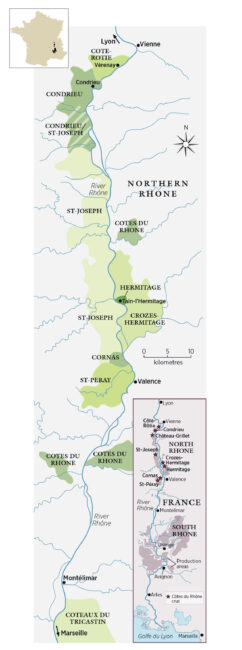
This week’s package contains examples of Northern Rhône wines that strike the ideal balance sought by people who consume rather than collect—smoky complexity, Syrah typicity, and lovely drinkability and at a price that will not require a second mortgage.
Northern Rhône Royalty: Côte-Rotie, Cornas and Hermitage
The triumvirate of Côte-Rôtie, Cornas and Hermitage rule the narrow terraces of Northern Rhône indomitably and are responsible for the world’s most superlative Syrahs. They’ve been called ‘unicorn wines’ in that the best of them are rare, and if available, very expensive.
Rolling above the town of Ampuis, the roasted slopes of Côte-Rôtie have several distinct personalities, one most suitable for wine, the others, less so. Only the south and south-east facing hillsides on right bank of the river are worth the discomfort of cultivating and picking, while those to the south—collectively known as the Côte Blonde—produce similar but earlier drinking wines than those produced on the Côte Brune to the north (although traditionally, the wines from these areas have been blended).
One of the smallest appellations in Rhône, Cornas is under three hundred acres—smaller than some single estates in Bordeaux. It produces only red wines made exclusively from Syrah—a variety that ripens with greater ease here than virtually anywhere else in Northern Rhône. Celtic for ‘burnt earth’, Cornas wines—in homage to the name or vice versa—frequently reflects smoky notes with deep, burly earth tones. Once considered ‘country wines’ of value only to those who love rusticity, the reputation of Cornas has skyrocketed in recent vintages to become one of the most sought after wines in France.
From a handful of vineyards, Hermitage is responsible for some of France’s most enduringly prestigious wines, in part by allowing the addition of 20% Viognier to its Syrah. Whether white or red, these gems are long-lived and full-bodied. Terroir, of course, is lifeblood: The granite hillside where the Hermitage vineyards are planted face south, overlooking a short section where the river Rhône flows west to east rather than north to south. This orientation means that the grapes benefit from the maximum amount of sunlight throughout the day.
The Sleeping Beauties of the Northern Rhône
A number of smaller, previously dormant areas that nestle in pockets near the big-name appellations in the Rhône have begun a remarkable comeback; this is the result of hard work by few steadfast vignerons who have saved noteworthy properties from being reclaimed by forest. It is among these parcels of land, which peek through mostly unfriendly hinterland that we make our modern-day discoveries— worthy and exciting Syrahs; the best made since the phylloxera blight wiped out the original vineyards in the 1800s.
Domaine Les 4 Vents
Formerly Le Domaine de Lucie, the 25-acre domain was renamed when Nancy Cellier joined her sister Lucie Fourel at the helm of the family estate in Crozes-Hermitage. The new name was borrowed from the nearby auberge (country inn) once owned by Lucie and Nancy’s great grandparents.

Sisters Nancy and Lucie Fourel, Domaine les 4 Vents
Before returning to the estate, Lucie spent a few years as an apprentice with different wineries in the Rhône Valley—time she spent developing both the philosophy and practices for bio-dynamic farming and natural vinification for which the domain has obtained certification. Lucie does not use sulfur during the winemaking process and only just before bottling does she add a minimal dose and the wines are fermented using only indigenous yeasts.
“We are in perpetual search of respecting the environment,” says Lucie. “Our interventions in the vineyard or in the cellar aim to accompany the grapes, then the wine, towards its most authentic expression”.

Crozes-Hermitage
Crozes-Hermitage is the largest of the Northern Rhône appellations, but it labors in the shadow of its storied namesake Hermitage without pretentions of equality. Price reflects that, of course, and the wine itself does hold at least some measure of the magnificence found in its massive, long-lived neighbor. The wine-growing region has a continental climate distinct from the Southern Rhône, and its sheer size adds to the diversity of its terroir. Soils south and southwest toward Gervans largely consisting of granite and clay, while Tain-l’Hermitage is primarily made up of rocks, sand, and clay. The flatter topography in the southern Crozes-Hermitage area is primarily alluvial soil due to Rhône river deposits.
 Domaine Les 4 Vents ‘Les Pitchounettes’, 2020 Crozes-Hermitage Rouge ($28)
Domaine Les 4 Vents ‘Les Pitchounettes’, 2020 Crozes-Hermitage Rouge ($28)
‘Les Pitchounettes” is a cuvée that originates from relatively young vines in the lieu-dit Les Chassis near the village of Mercurol where the soil is a sandy-silty alluvial clay with a lot of surface river stones. Yields are very low, typically around 30 hectoliters per hectare and harvesting is done by hand. The grapes are de-stemmed and the juice is left to macerate with the skins for three weeks with very little rémontage or pigéage (pumping over or punching down the cap). The wine shows classic Syrah flavors of black fruit and smoky pepper accented by cedar, vanilla and tobacco.
Domaine Eric et Joël Durand
Like Domaine Les 4 Vents, this is a sibling operation: Brothers Éric and Joël Durand produce wine from fifty acres of vines about six miles south of Tain l’Hermitage.
First joining forces in 1996, the brothers are devoted to ‘the polycultural family business of cultivating grapes’. The domain itself is based in Châteaubourg in the Ardèche; their Syrah, Marsanne and Roussanne grapes farmed over the appellations of Cornas, Saint-Péray and Saint-Joseph in addition to the IGP of Collines Rhodaniennes.
The brothers are firm believers that in order to make great wine, you must begin with great grapes, and to achieve this, “you must have impeccable vineyards.”
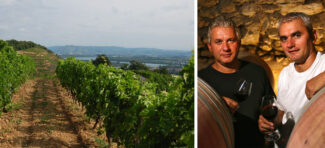
Éric and Joël Durand, Domaine Durand
Says Éric, “We work hard in each of parcels, not only managing the plants, but also maintaining and rebuilding the terraces on which they are planted. On these predominantly granitic slopes, we find that the noble Syrah grape finds fantastic expression.”
Saint-Joseph
St-Joseph covers a lot of territory and multiple terroirs; it encompasses 26 communes and stretches from Chavanay in the north to Châteaubourg in the south, roughly 30 miles in length. The reds from the region tend to be light for Rhônes, a result of soils containing less granite and vines that face east rather than south. But in strong vintages, they are spectacular.
Saint-Joseph reds must be 90% Syrah, but are allowed have up to 10% Marsanne or Roussanne as a blend, although in practice, most are pure Syrah showing classic notes of roasted meat and sweet spices. Most are ready to rock upon release, but may benefit from a bit of short-term cellaring, generally less than a year, although a select few may rival a great Côte-Rôtie or Hermitage.
 Domaine Eric et Joël Durand, 2020 Saint-Joseph ‘Les Coteaux’ Rouge ($35)
Domaine Eric et Joël Durand, 2020 Saint-Joseph ‘Les Coteaux’ Rouge ($35)
‘Les Coteaux’ means ‘the hills’, and true its name, the lieu-dit is found on a granitic slope where the vines are between 20 and 30 years old. The wine shows iron, iodine and smoky gravel behind rich blackberry extract with a rich cocoa and crushed stone finish.
Saint-Péray
Saint-Péray may be Northern Rhône’s biggest curiosity, an appellation known for whites and sparkling wine. These anomalies are predominantly produced from Marsanne, while Roussanne makes up the remainder of the vine space. Found near the southernmost limit of Northern Rhône region, it encompasses a mere 185 acres of vines.
Made via ‘méthode traditionelle’, the sparkling wines of Saint-Péray are relatively light-bodied, as are the still whites. This is due in part to limestone-rich soils and also to the immediate local topography, where the climate is not as hot as most locations in the valley.
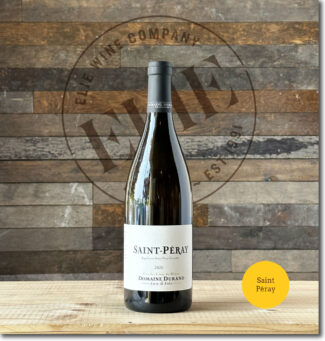 Domaine Eric et Joël Durand, 2020 Saint-Péray Blanc ($30)
Domaine Eric et Joël Durand, 2020 Saint-Péray Blanc ($30)
A blend of 50% Marsanne and 50% Roussanne grown in clay and limestone soils, the wine appears mid-gold in color and exhibits summery freshness on both nose and palate. Flavors of apricot and ripe stone fruits balance orange citrus to create a dynamic interplay of richness and zing with beautiful intensity beneath and a long, elegant finish.
Martin Texier
Domaine de l’Amandier
Martin Texier is the son of the well-known natural wine producer, Éric Texier, but for a while, he resisted the lure of the vine by studying economics, then becoming an accomplished DJ. But the family fate/curse began to show up in New York, where he learned about the trade via internships at Uva Wines in Brooklyn and Flatiron Wines in Manhattan.
He began making wine in 2014, and now owns twelve acres near Saint-Julien-en-Saint-Alban, where he raises classic Rhône varieties, red and white. Soils are varied; clay, limestone, gneiss, schist and granite allowing a wide range of styles of wine.
Says Martin, “My passion is to revive the local traditions of working the natural way, both in the vines and in the cellar, which includes native yeast fermentations and no sulfur.”
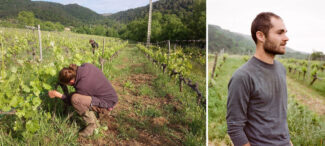
Martin Texier, Domaine de l’Amandier
Martin considers himself an artisanal, organic winemaker pushing for a new wave of natural, non-manipulated wines, and his winery is part of a community of thriving craft producers of (among other things) cheese and honey. The results he has been getting this early in his career are clear testament not only to his skills, but to his commitment to the planet: “A good winemaker isn’t an artist but a poet. As a grower, you can have an impact on your product by knowing your land, your trees, your vines and the weather. I don’t think you can create a good wine, but only create an environment from which a good wine can spring.”
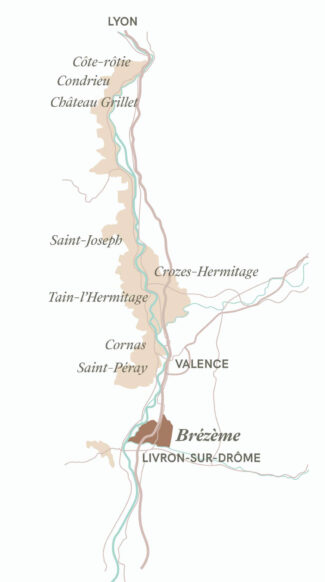
Côtes-du-Rhône Brézème
Brézème sit on the northern tip of Côtes du Rhône, alone in that it has no official status. It owes its official acceptance to history, as the Brézème name on wine labels predates the establishment of the appellations system in the 1930s.
The growing zone is located around the town of Livron-sur-Drôme on the northern bank of the Drôme river just before it flows into the Rhône. Although the potential vineyard area reportedly spans 200 acres, only around fifty acres are currently directed to the production of Brézème wine.
Predominantly Syrah, the vineyards are found on south-facing hillsides immediately overlooking the Drôme river just east of Livron, although vineyard land extends to the terraces of Fontgrand, three miles to the north.
Soils are generally limestone-marl, and depending on the location, they may also be rich in ferrous minerals, sand and pebbles.
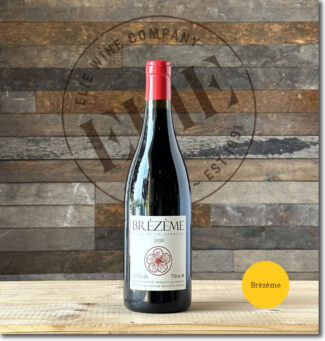 Martin Texier ‘Vigne de la Carrière’, 2020 Côtes-du-Rhône Brézème Rouge ($37)
Martin Texier ‘Vigne de la Carrière’, 2020 Côtes-du-Rhône Brézème Rouge ($37)
An organic and low sulfur Syrah that showcases the character of Brézème’s limestone slopes with impressive fruit density: Plum jam and ripe blackberries mixed with violet appears on the nose, and the palate is evidence of the ripeness of the vintage without become cloying or overly dense.
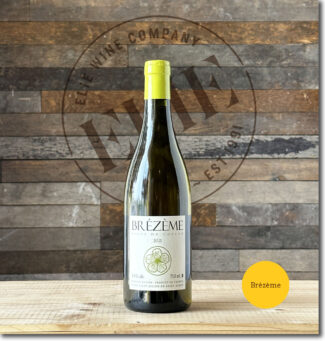 Martin Texier ‘Vigne du Coteaux’, 2021 Côtes-du-Rhône Brézème Blanc ($49)
Martin Texier ‘Vigne du Coteaux’, 2021 Côtes-du-Rhône Brézème Blanc ($49)
This Roussanne comes from Texier’s young vines in the cooler, more limestone-driven vineyards of Brézème. The vines are farmed organically; the grapes are fermented whole-cluster, then pressed and fermented on native yeasts, followed by lees-aging in concrete without stirring and only minimal sulfur added at bottling. It is a remarkably complex and textured wine from vines so young, revealing exotic spices, melon and a salty edge to the finish.
Collines Rhodanienne IGP
‘IGP’ is the Europe-wide equivalent of ‘Vin de Pays’, a classification that focuses on geographical origin rather than style and tradition, giving winemakers greater stylistic freedom than ‘AOP’. Collines Rhodaniennes is in the northern Rhône Valley, and covers an area from Lyon to Montélimar and includes some of southern France’s most famous AOP appellations, including Côte Rôtie, Condrieu and Hermitage.

Domaine Georges Vernay
Few winemakers can claim to have brought home wine scores of 100 points, and even fewer can be credited with saving an appellation and a grape variety. Enter the Vernay family: Founded by Françis Vernay in 1937 in the heart of Condrieu, the efforts of Françis were instrumental in the creation of the official Condrieu appellation in 1940. Francis was succeeded by his son Georges, who played a key role in restricting the geographical boundaries of Condrieu and has been honored as having saved the appellation, which grows Viognier exclusively, from extinction.
In 1996, when her brothers showed little desire to take over the family estate Georges’ daughter Christine came on board as winemaker and General Manager of the estate and is now considered one of the great winemakers in France; several of her wines have recently been awarded the coveted 100/100 in top wine publications. Sadly, Georges Vernay passed away at the age of 92 in 2017.
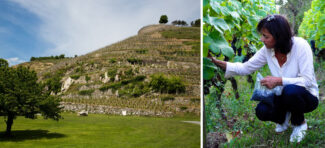
Christine Vernay, Domaine Georges Vernay
Under Christine’s direction, the fifteen-acre estate expanded their lineup by introducing a new from the Saint-Joseph appellation, La Dame Brune. Their best vines are planted on steep, hillside terroirs with granite and sandy soils. All work in the vineyards is organic and the winery was certified organic in 2019.
Christine says (with pride rather than bitterness), “Twenty years ago, it was rare for women to take over a wine estate, so I wasn’t even considered as a future manager. As the daughter of the so-called Pope of Condrieu who believed in the potential of the Viognier white grape variety from the 1970s, I only started working on this project at the age of 39. My father had saved the Condrieu appellation, pinning his hopes on the vineyard rather than cherry plantations or the cultivation of Ratte potatoes and peas, which were favored by many farmers at the time.”
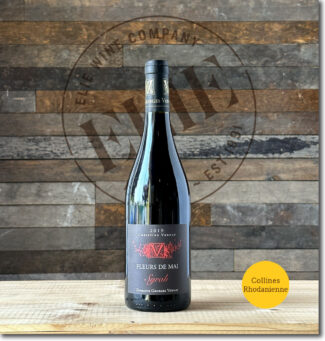 Domaine Georges Vernay ‘Fleurs de Mai – Syrah’ Christine Vernay, 2019 Collines Rhodanienne IGP Rouge ($34)
Domaine Georges Vernay ‘Fleurs de Mai – Syrah’ Christine Vernay, 2019 Collines Rhodanienne IGP Rouge ($34)
From 50-year-old Syrah vines planted adjacent to Condrieu, the grapes ferment in stainless steel and barrel and then age about 8 months in wooden vats. The profile is nearly identical to a top Côte-Rôtie, with an opening whiff of violet and cherry puree giving way to savory game and cassis notes.
Domaine Stéphane Ogier
Rooted in Ampuis for seven generations, the Ogier family is blessed with some truly remarkable soil. Under the direction of Stéphane Ogier, the estate manages 27 acres in some of the top Côte-Rôtie terroirs—Lancement, Côte-Rozier and La Viallière. Among the ironies inherent in having seen so much change in the region is that back in the 1950s, the family’s apricots sold for more than their grapes.
In the past twenty years, the winery has grown from producing 15,000 bottles annually to more than a quarter million in 2022, and is widely regarded as a reference point for the appellation.

Stéphane Ogier, Domaine Michel et Stéphane Ogier
Having decided at the age of six to pursue winemaking, Stéphane Ogier first studied viticulture and oenology in Beaune and then did practical trainings with some of the best winemakers in Burgundy and abroad. During this time, he grew his philosophy of winemaking and his laser-like focus on terroir and now farms 12 individual parcels in Côte-Rôtie as well as others in Condrieu, Côtes du Rhône and Vienne.
Of particular interest is his holding in Collines Rhodanienne, of which Stéphane says: “It’s the same land as Côte Rôtie but not in the appellation. My first vintage was 1991, and the wine is made the same way as the Côte Rôties.”
 Stéphane Ogier ‘La Rosine – Syrah’, 2018 Collines Rhodanienne IGP Rouge ($38)
Stéphane Ogier ‘La Rosine – Syrah’, 2018 Collines Rhodanienne IGP Rouge ($38)
An exquisitely detailed, vineyard-designated wine from a steep-pitched, granite-rich parcel two miles from the famed Côte Blonde. La Rosine is said to be Stéphane Ogier’s ‘secret weapon’ in his vineyard-specific arsenal. All the pedigree of a Northern Rhône powerhouse without the price tag; it blends scents of anise, black olives, cola and plums, revealing substantial complexity in the full, fruit-centered body.
NEW ARRIVAL
Domaine François & Fils
Getting It Right in Côte Rôtie: ‘A Great Deal of Freshness and Elegance’
The François family paints an interesting portrait—their main occupation is farmhouse cheese making made using milk from their herd of cows. Wine appears to have begun as an afterthought, and even today, they sell all but their finest grapes to négociants.

Brothers Erwan and Yoann François, Domaine François & Fils
Yoann François was the main catalyst in expanding the family’s wine label; of the ten acres they own, he champions their Côte-Rôtie which is made using grapes from three south-facing parcels, ‘Les Rochains’, ‘Rozier’ and ‘Le Bourrier’, accounting in total for account for about 3.7 acres. All three lieux-dits are located in the ‘Côte Brune’ region where vineyards are very steep and soils are composed of mineral-rich mica-schist—a good base for the 30-year-old vines of Syrah and Viognier. The vines are planted at a density of 8,000 to 9,000 per hectare and yields are 35 to 40 hectoliters per hectare.
Côte Rôtie: Single Site (Lieu-dit) Revival
Lieux-dits are a wine lover’s Google Earth; a satellite view of an appellation focused on a tiny, representative parcel. Not all vineyards have lieux-dits, and among those that do, not all are created equal. In general, it’s a term that refers to a geologically homogenous portion of a vineyard with a self-contained story to tell about its quality or, occasionally, its significance to history. Although lieux-dits are generally not required to be formally registered, they are always named, and that name may occasionally be confused with a producer’s cuvée name, which is often similar. Different appellations have different laws regarding lieux-dits; in Alsace, for example, they are mandatory for Grand Cru AOP labels, whereas in Burgundy, Grand Crus are forbidden from using them.

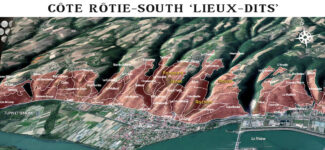
In the Rhône, lieux-dits are often associated with the region’s top estates, and those that do not have an officially registered place in the French Cadastre are considered ‘les marques’ of their producers. In either case, they are ‘terroir distilled’—an extremely fine-tuned expression of an individual location. To recognize one is to recognize that within the sprawling Rhône there exists an almost microscopic essence that only a lieu-dit can reveal.
 François & Fils, 2019 Côte-Rôtie ($67)
François & Fils, 2019 Côte-Rôtie ($67)
This traditional co-ferment contains 4% Viognier to add perfume to the Syrah; it shows finessed aromatics, powerful spice and balanced structure, violet, white pepper, black fruit and nutmeg, drawing a bit from each of the four Côte Brune lieux-dits that make it up: Le Bourrier, Fongeant, Janet and Rozier.
 François & Fils, 2019 Côte-Rôtie ‘Rozier’ ($81)
François & Fils, 2019 Côte-Rôtie ‘Rozier’ ($81)
Rozier, in the Côte Brune, offers a perfect south-west exposition and vines around fifteen years old. The wine shows sunbaked earth and iron behind plush, plump notes of cassis balanced by a zesty spine of acidity and finishing long with hints of licorice and chocolate.
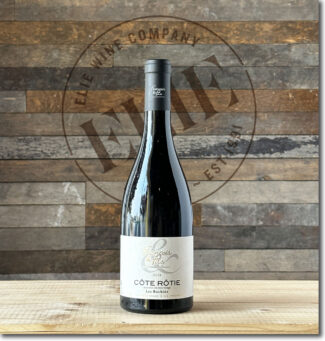 François & Fils, 2019 Côte-Rôtie ‘Les Rochins’ ($108)
François & Fils, 2019 Côte-Rôtie ‘Les Rochins’ ($108)
Les Rochins is a very steep parcel next to La Landonne and Rozier and folded into schist soils with iron and clay, producing dark, full-bodied wines that an benefit with some bottle age. This one shows ripe black cherries, incense, brambly blueberries and roasted meat along with loads of ultra-ripe tannins.
Vintage Journal
2021
Like most of France in 2021, the Rhône Valley suffered from a difficult growing season. The winter and early spring was relatively dry, although temperatures were so mild that there was premature vine growth. This was followed by a series of hard frosts that dramatically cut yields, and the bunches that remained intact were subject to disease during an unusually humid summer. Cloudy skies prevented even ripening and brought devastating storms in July and August. The grapes were slow to reach phenolic ripeness and, as a result, the harvest was later, longer and slower than normal. The wines have good structure and acidity and although alcohol was lower than in other years, there was still enough to assure body. For the big red appellations like Saint-Joseph and Hermitage, black and white pepper notes come through strongly, but the wines themselves tended to be more restrained, favoring elegance over bombast. The whites are fresh, elegant and aromatic rather overblown.
2020
The most notable features of 2020 are beginning to sound like a ‘new normal’: Drought, heat and an early harvest. Gratefully, heavy rains in the previous October, November and December that created reserves the vines could draw from. Rain fell in May and June, although the rest of the growing season was exceptionally dry. Guillaume Sorrel (Domaine Marc Sorrel) went as far as to say that 2019 precipitation saved his 2020 vintage.
The vineyards roused early thanks to warm weather in March, but mercifully there were no spring frosts. Northern Rhône held on to this lead throughout the year, resulting in the earliest vintage since 2003. Warm days were balanced by even cooler nights, which allowed the bunches to ripen gradually and evenly, producing small, healthy and perfectly formed berries. Syrah yielded clean, fresh fruit flavors, silky tannins and refreshing acidity while Northern Rhône whites made from the typically lower acid varieties of Viognier, Marsanne and Roussanne saw enhanced perfume, vibrancy, texture and freshness.
2019
2019 marked the fifth consecutive vintage in which the wines of Northern Rhône are rated very good and some, truly exceptional. It was yet another vintage marked by an intense summer heat wave, however, with hardly any other viticultural challenges to contend with most growers able to embrace yet another ‘solaire vintage’ and ushered in a sizable crop of beautifully healthy and balanced grapes.
2018
2018’s ‘en primeur’ Cliff’s Notes: “Very hot and dry, resulting in a plentiful ripe crop. Many wines with low acidity and potent alcohol, but those that could achieve balance made impressive wines.”
In slightly greater detail, both the winter and spring were wet and mild but despite some light rain falling during flowering, it was still reasonably successful. Unexpected rainfall in June did cause some difficulties with mildew and rot, but it was mostly restricted to Southern Rhône. The rot meant many producers had to spray but, unfortunately, a large amount of the crop was still lost. Eventually, the damp weather dried up and a hot, dry summer took its place. By the time it came to harvest, temperatures were high and producers had to work quickly when handling the grapes.
In Northern Rhône, the harvest was shorter than in the south as the grapes ripened rapidly making excessive alcohol a potential issue. Picking began early September and lasted through to the middle of the month. Despite the hot year, the whites still retained a fresh character as well as being concentrated, while the reds ranged from black-fruit powerhouses to friendlier red-fruited wines. Although some wines did suffer a touch from too much alcohol and a lack of acidity, many were successful with interesting characters and capacity to age.
- - -
Posted on 2023.05.25 in Côtes-du-Rhône, Saint-Joseph, Cornas, Côte Rôtie, Hermitage, Brézème, Saint-Péray, France, Saturday Sips Wines, Wine-Aid Packages, Northern Rhone | Read more...
A Dozen Reasons to Drink Beaujolais: Complex And Easy-Going Reds by Six Producers in Twelve Appellations including Ten Crus (Memorial Day Dozen $399)
Join us for Saturday Sips
Come as you are; come any time that’s convenient for you during our business hours to sample selection from this week’s selections. Our staff will be on hand to discuss nuances of the wines, the terroirs reflected, and the producers.
“First there is a mountain, then there is no mountain, then there is.”
Donovan’s cryptic 1967 nod to Buddhist philosophy might be applied equally to the evolution of Beaujolais in the minds of many wine drinkers: The immensely ‘likeable’ wine offers a perfect introduction to the hedonistic pleasures of French wine, but once tastes expand, it may seem somewhat simplistic and one-dimensional. Lacking the snob appeal of pricey Burgundy or window-dressing Bordeaux, Beaujolais can be shoved to a back burner and remembered primarily for the fun, early-release Kool-Aid known as Beaujolais Nouveau. But once palates expand to appreciate nuance of grape variety and the technicality of cellar styles, the world becomes larger and a return to the beauty of Beaujolais is a transcendental joy.
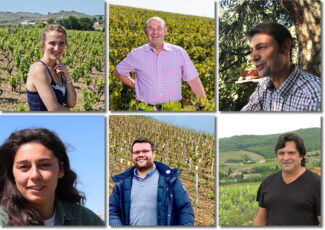
Top row: Marie-Élodie Zighera (Clos de Mez), Pierre-Marie Chermette (Domaines Chermette), Claude-Édouard Geoffray (Château Thivin)
Bottom row: Laura Lardy, Valentin Montanet (La Soeur Cadette), Guy Breton
This week’s package includes a sampling from various quality strata in Beaujolais. Each will leave its own unique imprint on the senses; each is made by vignerons who are representative of the current mood in the appellation as well as the historical significance. These are ideal wines with which to celebrate Memorial Day—lodestars for light, bright red wines that are best served with a significant chill.
The Original Thirst Quenching Wine
Nobody loves pretense more than the French, and nobody is better than the French at putting pretense aside for a moment to savor life’s pleasures. ‘Vins de soif’ are wines that Americans call ‘quaffers’ and are meant to satisfy the most primal of gustatory needs: Thirst quenching. This is not to say that the enjoyment level of vins de soif is restricted to the basics; often they contain elements that are universally appealing—sensations of sweetness and a profusion of fruit and spice.
No place on earth is more representative of these qualities than Beaujolais, the original vin de quaff. Overlapping both Burgundy and the Rhône, paying homage to both while owing allegiance to neither, the picturesque vineyards of Beaujolais are planted almost exclusively to Gamay and have been producing accessible, fruit-forward wines since the Romans first established trading routes along the Saône valley.
Arguably, these are not special occasion wines, but rather, every day wines. And along with their universal appeal comes a universal truth: We are granted far more ‘every days’ than we are highlight moments.

Clos de Mez
Marie-Élodie Zighera has roots in the past; a metaphor that is not really a metaphor since her oldest vines were planted so long ago that when France entered the First World War, they were already producing.
“Vines have been in my maternal family for four generations,” she says. “The grapes they grew were delivered to the cooperative cellar by my grandmother and mother up until I arrived at the domain as a winegrower. However, this did not deter my grandmother or mother from taking great care of our 17-hectare vineyard. At that time, I was living in Paris with my family and we would come to Fleurie for the holidays. I used to love this time so much, being in close contact with nature.”
With a drive to turn this love into a vocation, Zighera studied viticulture; after graduation, she found work in a number of vineyards. Among them was Clos Vougeot, where she concluded that she could not hope to make such wines from her family holding.
Then came the eureka moment: “A professional tasting of old vintages was held and I was invited to attend during my work placement at Vougeot. With a Morgon 1911, the unanimous opinion was that it was magnificent wine; that it had aged as well as a Burgundy. I finally knew what type of wine I wanted to make and most importantly I realized it was possible. I had another strong advantage too: the freedom to imagine without guidelines being imposed. I set up my business in 2006 and named the domain Clos de Mez, a shortened version of my name.”
Zighera makes wine in Fleurie and Morgon, where the average age of vines in her plots is 45 years. Her Fleurie holding outlines a hilly landscape, where Gamay vines follow the contours of the slopes of Fût d’Avenas, the mountain passes of Durbize, Labourons and Raymont Peak. She says, “Legend recounts that a Roman legionary once passed through here, leaving his name to the site and to the village. Our vines in Fleurie are found in the southern part of the appellation, bordering Morgon. Facing South/South-East, they stand at an altitude of about 300 meters. The soils of Fleurie La Dot and Fleurie Mademoiselle M, which originate from acid rock, are deep and provide good drainage. Rose colored granite is widely predominant here and is found in the form sand called saprolite.”
Cru Morgon
Morgon, on the western side of the Saône, may only appear on the label of a Gamay-based red wine; even so, the appellation allows the addition of up to 15% white wine grapes: Chardonnay, Aligoté or Melon de Bourgogne. Nevertheless, the wines of Morgon wind up being among the most full-bodied in Beaujolais, with the potential to improve in the cellar so consistently that the French describe wines from other AOPs that display this quality by saying, “It Morgons …”
The vineyards occupy slightly under five square miles surrounding the commune of Villié-Morgon, with the vines of Fleurie and Chiroubles directly to the north and Brouilly and Regnié along the southern border.
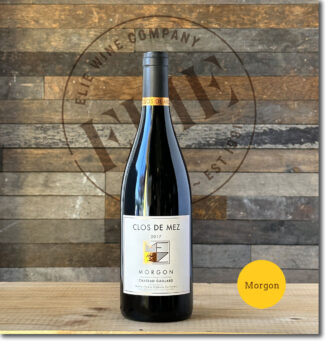 Clos de Mez, 2017 Morgon-Château Gaillard ($32)
Clos de Mez, 2017 Morgon-Château Gaillard ($32)
Chateau Gaillard is a lieu-dit that passed to Marie-Élodie from her grandmother. Adjacent to the border of Morgon where it borders Fleurie, the plot of 60+ year old vines with very low yields giving a wine of great depth and ageing potential. Grapes are sorted as they are picked in each plot of the vineyard; the grapes are moved to the vats by a system of gravity where whole-bunch pre-fermentation maceration at cold temperature is carried out for few days, followed by alcoholic fermentation interspersed by cap-punching and pumping-over. The wine offers ripe, black-fruit character with lively acidity and an expansive finish.
Cru Fleurie
Each of the Beaujolais crus wears its own face; where Morgon is bold and handsome and Saint-Amour is a fairyland of delicate beauty. Fleurie—covering an unbroken area of three square miles—represents Beaujolais’ elegance. The terroir is built around pinkish granite that is unique to this part of Beaujolais, with the higher elevations accounting for thinner, acidic soils that produce graceful and aromatic wines. Below the main village, the wines are grown in deeper, richer, clay-heavy soils and the wines themselves are richer and deeper and appropriate for the cellar. The technique known as gridding, which involves extracting more color and tannin from the skins of the grapes, is proprietary to Fleurie.
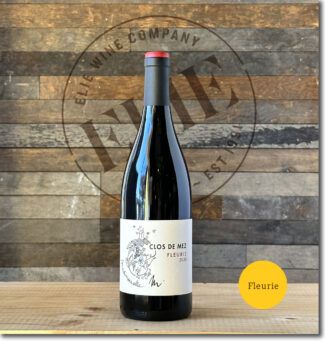 Clos de Mez ‘Mademoiselle M’, 2020 Fleurie ($28)
Clos de Mez ‘Mademoiselle M’, 2020 Fleurie ($28)
La Dot refers to the dowry that Marie-Élodie’s grandmother received, and this wine pays homage to her. From a plot of 50-year-old vines located in the southern sector of Fleurie, close to the border of Morgon, it is produced from gnarled old goblet pruned vines grown on decomposed sandy pink granite and made from very low yields. 40 to 50% of this wine is matured in barrels for 9 months, leading to a dense, somewhat balsamic style of Fleurie with dark fruit notes and spicy complexity.
Pierre-Marie Chermette – Vissoux
When a winemaker tries to bottle something for everyone, he/she is not always successful. The father, daughter and son team of Martine, Pierre-Marie and Jean-Etienne Chermette of Domaine du Vissoux are the exception to prove the rule, producing high quality white, red and Beaujolais rosé from crus such as Brouilly, Fleurie, Moulin-à-Vent, Saint-Amour, Crémants de Bourgogne as well as hand crafted fruit liqueurs, cassis and vine peach with ginger.
The family is considered a beacon of Beaujolais excellence, able to broadcast the region’s varied terroirs with authority: Old vines, diligent but traditional vinification and élevage in foudre are the rudiments of their approach.
Cru Moulin-à-Vent
At the top of Beaujolais, geographically and (arguably) in terms of quality, Moulin-à-Vent’s oddly toxic soils produce wines of great merit. Manganese exists here in quantities not found anywhere else in Beaujolais; it retards leaf growth and creates smaller bunches, resulting in wines of phenomenal concentration that can be cellared for a decade or more.
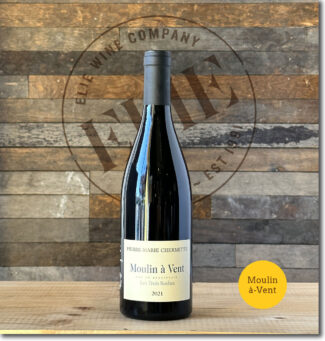 Pierre-Marie Chermette Vissoux ‘Les Trois Roches’, 2021 Moulin-à-Vent ($33)
Pierre-Marie Chermette Vissoux ‘Les Trois Roches’, 2021 Moulin-à-Vent ($33)
The three ‘Roches’ referred to are the trio of lieux-dits from which the grapes are drawn; the Rochegrès plot, La Rochelle, which overlooks the old moulin-à-vent windmill, and Roche Noire. According to Pierre-Marie, “The east-facing Rochegrès gives the wine finesse and supple tannins; south-east facing La Rochelle gives the cuvée its framework with power and depth while the Roche Noire grapes contribute liveliness and fruit.”
The manganese-rich subsoil results in a wine that is supple, redolent of wild berries, spices, rose petals and orange rind showing, sparkling tangy acids and melting tannins.
Cru Brouilly
Nestled along slopes of a dormant volcano, Brouilly is the most southerly of the Beaujolais Crus. The proximity of the volcano has left the area saturated with rare blue diorite, a phenomenon that leaves the soil thin and stony—an ideal underbelly for deeply rooted, low yielding vines with an excellent concentration of flavor. The best vineyards of Brouilly are planted on the south-east-facing slopes of the mountain, where the vineyards are protected from winds from the nearby Beaujolais hills by Mont Brouilly itself, and are instead subject to early morning sunlight.
Brouilly covers land in six communes surrounding Mont Brouilly, none of which (unusual for a Beaujolais cru) are named Brouilly. The area gets its name from the hill, which in turn takes its name from a Roman lieutenant, Brulius, who is thought to have planted vines here some 2000 years ago.
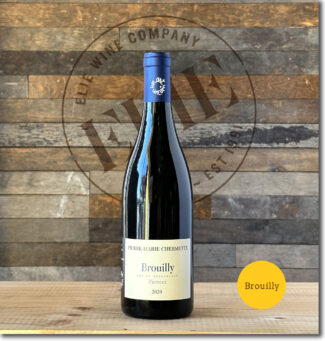 Pierre-Marie Chermette Vissoux, 2020 Brouilly–Pierreux ($31)
Pierre-Marie Chermette Vissoux, 2020 Brouilly–Pierreux ($31)
A textbook-perfect Brouilly from south-facing vines planted on granite scree. The lieu-dit name ‘Pierreux’ comes from the French word for stones, illustrating the make-up of the soil. The wine undergoes traditional Beaujolais processing, half-carbonic maceration with two pump-overs per day; 10 to 12 days of maceration in concrete tanks follow with no chaptalization, natural yeasting and bottling using a minimum of Sulfur. The wine is crisp, fruit-forward and juicy with expressive aromas of ripe raspberries and wild strawberry, savory spice and zesty acidity.
Cru Saint-Amour
The remarkable terroir of Saint-Amour sounds less romantic than the name, being predominantly Piedmont deposits, granite, limestone and clay. But this poetry-inspiring appellation, the most northerly of the ten Beaujolais cru areas, is located just to the south of the Mâconnais appellations of Pouilly-Fuissé and Saint-Veran.
As suits the name, the wines of Saint-Amour are light and delicate, the result of dry, warm winds from the north that keeps soils feathery-textured. Although Gamay is the predominant variety grown, it’s no wonder that this appellation produces more white wines than the other Beaujolais cru, although these Chardonnay/Aligoté –based wines often wear generic labels or are listed under the Saint-Veran (Burgundy) appellation that slightly overlaps Saint-Amour.
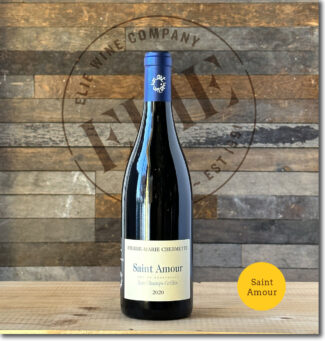 Pierre-Marie Chermette – Vissoux, 2020 Saint-Amour Les Champs Grillé ($32)
Pierre-Marie Chermette – Vissoux, 2020 Saint-Amour Les Champs Grillé ($32)
Les Champs-Grillés is a south-facing lieu-dit where the soil is made of noble granites that tend to give the wines full bodies that may be mistaken for a Moulin à Vent. The wine shows this weight, beginning with aromas of raspberries, rose petals, warm spices and orange rind and moving to a crunch mid-palate with crunchy red fruit and nicely integrated tannins.
Beaujolais
Brooding Beaujolais is an oxymoron; buoyant Beaujolais is a requirement. The broadest of all the classifications in Beaujolais, seeing such a designation on a wine label means that the grapes are generally grown in the southern part of the appellation and vinified using carbonic or semi-carbonic maceration, leaving dominant, candy-like notes.
Beaujolais’ climate is similar to Burgundy—moderate continental—and the main difference in the output is that whereas Burgundy’s Pinot Noir is fickle and difficult to ripen, Beaujolais’ rock star Gamay is an early-budding, early-ripening and vigorous cultivar. As such, outputs (if not controlled) can be overly prodigious.
 Pierre-Marie Chermette Vissoux ‘Origine Vieilles Vignes’, 2021 Beaujolais ($20)
Pierre-Marie Chermette Vissoux ‘Origine Vieilles Vignes’, 2021 Beaujolais ($20)
First released in 1988 as a cuvée of non-chaptalized Beaujolais Nouveau made using grapes from old vines, the wine comes from 20 acres of Gamay in Saint Vérand. The plot enjoys south-western exposure on dark granitic soil and the vines, between 35 and 100 years old, rely on Guyot and Cordon de Royat pruning. The wine is so inky you might mistake it for Syrah; but the fruit remains red punchy, and as Jancis Robinson says, “It is wine for drinking rather than contemplating.”
Château Thivin
Château Thivin is the oldest wine-growing estate in Mont-Brouilly, and they pride themselves as offering a château on a ‘human scale’ where six generations of the Geoffray family have been cultivating grapes since 1877 when Zaccharie Geoffray purchased the estate. His son Claude expanded the property over the next few decades, and his son (also named Claude) boosted the prestige of the zone in the face of the Great Depression when he played a pivotal role in the creation of the Côte de Brouilly appellation.
Thivin’s parcels are predominantly south-facing and are planted entirely with Gamay vines that now average 50 years of age. As a nod to biodynamics, the soil is plowed and composted regularly while cover crops are left between some rows to encourage microbiotic activity; no insecticides are used. According to Claude-Édouard Geoffray, “On a slope where grades reach 48% and the surface is crumbly, implementing these techniques is essential to safeguard the soil from erosion, but it isn’t easy! Each section of the vineyard is harvested and vinified separately to preserve the unique characteristics afforded by variations in exposure and altitude.”
In 2014, Claude-Édouard’s wife Sonja introduced a small herd of dwarf sheep to the Château’s walled vineyard. She says, “These little sheep, of the Ushant breed, graze in among the vines after the grape harvest until the buds burst, helping to maintain the green cover between the rows of vines,” adding, “During the growing period, the sheep are moved to the tree-lined meadow alongside the plot.”
Cru Côte de Brouilly
To suggest that Côte de Brouilly erupts with flavor is more than a metaphor; the appellation sits on the slope of an extinct volcano. Making up but a small fraction of the Brouilly appellation, Côte de Brouilly draws its unique terroir from volcanic blue diorite, which provides the thin, well-drained soil that causes vines to struggle and the resulting wine—concentrated and intense—to shine. The vineyards of Côte de Brouilly are found on the south and east slopes of Mont Brouilly, protected from winds from the nearby Beaujolais hills by the volcano itself. They enjoy morning sunlight maximized by the steep slopes of the vineyards. This hastens ripening so that the vineyards of Côte de Brouilly are among the first to be harvested in Beaujolais.
 Château Thivin ‘Cuvée Zaccharie’, 2021 Côte de Brouilly ($64)
Château Thivin ‘Cuvée Zaccharie’, 2021 Côte de Brouilly ($64)
Thivin’s flagship wine is an homage to Zaccharie Geoffray and comes from a selection of the estate’s best terroirs on the south-eastern slopes of Colline de Brouilly, where the terroir is built from fine, well-drained soil igneous origin (diorite porphyry) mixed with clay. The east and south-facing vines planted at high density and pruned into low goblets—Thivin relies on ‘green picking’ to obtain a lower, concentrated yield. The wine matures for 11 months in barrels. In spite of the substantial tannins that anchor this wine, it shows liveliness and alacrity, blending pepper, small macerated black fruit and mineral tones seamlessly.
Laura Lardy
“I tried to escape the winemaking fate, but to no avail,” says Laura Lardy. “After a couple of years trying my hand at something else, I went back to the family estate in 2015. And in 2017, when I was 27, the first vintage of my own wine was born.”
To an outsider, Laura Lardy’s career seems a bit inevitable; she is the fourth generation of a Fleurie winemaking family. Her father Lucien and brother Yohan are both active vignerons, making wines under their respective names, and Laura herself recalls how she was always keen on following her father in the vineyards from a tender age. Her path diverges in her devotion to organics–she started to convert the 13 acres of vines she rents from her father as soon as she took them over, led by the conviction that preserving the indigenous yeasts on the grape skins and respecting the soils leads to fewer chemical interventions in the cellar as well as a more faithful terroir reflection in the wine.
“I knew that if I was to make wine, it would have to be this way, no matter how hard it is in the beginning,” Laura asserts. “I try to be as respectful of the environment in my daily life, so it’s obvious I want to be just as careful about the ecology and waste management in my work.”
Cru Chénas
Wine from Chénas may be considered the rarest among the Crus, both in terms of quantity and the rarified flavors owed, in part, to the quartz found in certain parcels. Straddling the communes of Chénas and La Chapelle-de-Guinchay, it offers the smallest surface area of the Crus, although there are a dozen named lieux-dits that each display a unique personality.
Named for the ancient oak forests that once blanketed the commune (cleared first by the Gallo-Romans and then by local monks), the vines that replaced them are planted exclusively to Gamay, which offers Chénas wines characteristic notes of small black fruit, peony and spices highlighted by soft tannins.
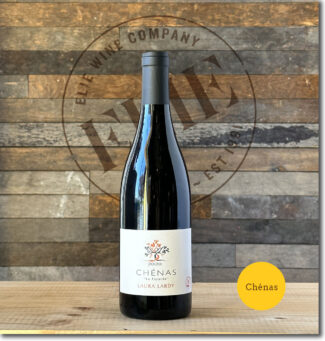 Laura Lardy ‘La Fayarde’, 2020 Chénas ($37)
Laura Lardy ‘La Fayarde’, 2020 Chénas ($37)
The wine originates from 40-year-old vines planted on sand and granite with a north-east exposure. True to Laura’s philosophy, grapes are hand-harvested and sorted, then spontaneously fermented in whole bunches in concrete tanks using traditional carbonic maceration. Following this is a slow press directly into old barrels where the wine rests for 6 months, then is bottled without fining or filtration, using minimum sulfur. The wine shows ripe black currant and blackberry, offering rich tannins and pronounced acidity, making this a wine that will respond well to aging.
Beaujolais-Villages
Of the three Beaujolais classifications, Beaujolais-Villages occupies the middle spot in terms of quality. To qualify, the wine generally hails from more esteemed terroirs in the northern half of Beaujolais, and from one of 38 villages that have not been named ‘Cru’ appellations. They are expressive wines with more structure and complexity than generic Beaujolais, though not as exclusive as those from the ten Crus.
Accounting for about a quarter of all Beaujolais production, Villages-level wines are most often produced by négociants and vinified using stricter rules as to yields and technique.
 Laura Lardy ‘Gourde à Gamay’, 2020 Beaujolais-Villages ($25)
Laura Lardy ‘Gourde à Gamay’, 2020 Beaujolais-Villages ($25)
Grapes for this cuvée come from granitic soils in the Lantignié commune. In typical Beaujolais style, the hand-harvested fruit is carbonic macerated as whole bunches in concrete tanks with indigenous yeast, then pressed and matured for 10 months in concrete. It is bottled unfined, with a small dose of Sulfur. The wine is bone-dry, of course, but gives an impression of sweetness through the ripe red fruit; there is a touch of earth, as is characteristic of Villages-level Beaujolais, light and refreshing.
La Soeur Cadette
Valentin Montanet is a grower/maker in the small village of Saint-Père along a little creek to the southeast of Vézelay, a geographic appendage of Chablis. In 1997, the Institut National des Appellations d’Origines awarded Vézelay its own AOP, and in 2010, Valentin joined his parents at Domaine de la Cadette and now manages it, espousing his parents’ philosophy of organic farming and natural vinification to craft refreshing, mineral-driven whites and reds.
The family’s Vézelay vineyards are deep in the Morvan, the great mountain range that runs west by northwest of the Côte d’Or. The land here is quite exceptional: The creation of the granite massif of the Morvan has uplifted a marl and limestone strata, revealing fossilized marine deposits. Vézelay soils are not the same as those of Chablis; instead of the Kimmeridgean clay, the clays here range from blue and gray to red, sometimes replaced by shallow limestone. While the climate is slightly cooler than in Chablis, the vines enjoy great sun exposure, lending a balance between generous fruit and deep mineral structure.
Cru Juliénas
Juliénas, at the northern end of the Crus, is also among the most elevated. Slopes are steep, but this verticality is ideal for sunshine basking, allowing grapes to ripen easily here, giving the wines more flesh and backbone. The terroir is as varied as any in a single Cru, with less granite and more ‘blue stone’—a friable, decomposed volcanic schist that the locals call ‘terre pourrie’, or ‘rotten rock.’ The many soils of Juliénas produce such an array of wines that there is no true Juliénas style, although they can be counted on to display a heart of stone and a soul of fresh forward fruit.
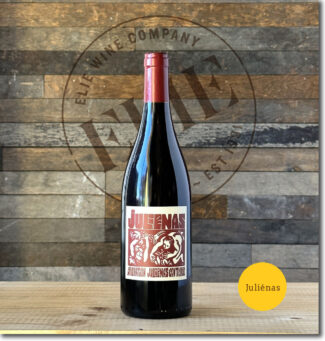 La Soeur Cadette, 2021 Juliénas ($34)
La Soeur Cadette, 2021 Juliénas ($34)
When weather ruined his 2016 Burgundy harvest, Valentin Montanet turned disaster into opportunity by acting on a long-held dream: To make Beaujolais, a tradition he has continued ever since. The thread of Burgundy remains evident in the bottles, which originate from six acres with vines 40 years old, but the wine is distinctly Juliénas—graceful, with crunch, fruit and minerality.
Guy Breton
Guy Breton took over the family domain from his grandfather in 1986—up until then, the family had been selling their fruit to the large cooperative wineries which dominated the region. The rise of imported yeast cultures to impart flavor and aroma, the use of high-tech carbonic maceration and the widespread commercialization of Beaujolais Nouveau played hell with the region’s reputation, and to much of the wine world, Beaujolais came to be seen as one-dimensional, lacking any expression of the native terroir.
Following the example of traditionalist Jules Chauvet, Guy and three other local vignerons initiated a ‘back-to-nature’ movement, calling for called for a return to the old practices of viticulture and vinification. This began with old vines and refusing to use synthetic herbicides or pesticides. They harvested late and sorted rigorously to remove all but the healthiest grapes, adding minimal doses of sulfur dioxide or none at all, and refusing both chaptalization and filtration.
“The end result allows my wine to express itself naturally,” he says, “without make-up or plastic surgery: rustic, spicy, loaded with schist minerals and at the same time, refreshing and deep-down delicious.”
Cru Chiroubles
Chiroubles is relatively tiny, with fewer than a thousand acres under vine, but it is a mouse that roars. This is due mostly to elevation: Chiroubles vineyards are the highest in Beaujolais, with some planted 1500 feet above the Saône River valley. Taking advantage of extreme diurnal shifts between the warm days and cold nights, the same soils that produce Fleurie to its immediate north here build wines that are lighter and fresher, often with pronounced floral characteristics.
 Guy Breton ‘Cuvée Léa’, 2020 Chiroubles ($39)
Guy Breton ‘Cuvée Léa’, 2020 Chiroubles ($39)
Guy Breton loves to vinify in a style that is light, bright and juicy—as such, the high-altitude, steep, decomposed granite slopes and old vines of Chiroubles are well suited. From three, recently acquired acres of 60-year-old vines, ‘Cuvée Léa’ shows floral, succulent aromatics bursting with notes of forest berries, and so delicate on its feet that it serves as a user-friendly counterpoint to some of the more structured Cru wines from Beaujolais.
Cru Régnié
Many Beaujolais wines are best consumed in their youth, and this is a quality emphasized with gusto by Régnié, the youngest of the Beaujolais crus. In fact, it wasn’t until 1988 that a group of 120 wine growers lobbied to get the appellation officially recognized, pointing out the newcomer in the family has plenty to offer: Its favorable geographical location between its two brothers, Brouilly and Morgon, allows the production of wines of a unique fruitiness.
Often called the ‘Prince of the Crus,’ Régnié’s terroir is distinguished by the pink granite soils found high in the Beaujolais hills. Here, at some of the highest altitudes in the region, vines are planted on coarse, sandy soils that are highly permeable and drain freely, an environment which is well suited to the Gamay grape variety.
Further down the slopes, higher proportions of clay with better water storage capabilities lead to a slightly more structured style of wine. The variation within the vineyard area allows growers to produce everything from fresh, light wines to heavier, more age-worthy examples of Régnié.
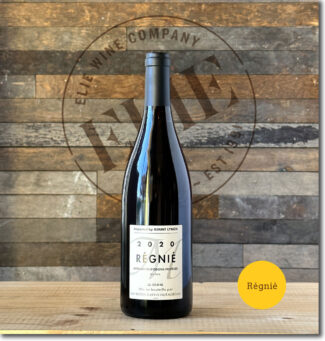 Guy Breton, 2020 Régnié ($36)
Guy Breton, 2020 Régnié ($36)
The vineyards of Régnié sit high on the slope between Brouilly and Morgon, and the wines often show the perfume and brightness of the former along with the mineral-driven structure typical of the latter. Add to that Breton’s house style, wines are designed to be drunk with abandon. As Breton himself puts it, “ At first, a dollop of supple, juicy fruit evokes the sandy layer of topsoil into which these Gamay vines—many of them a century old—sink their roots. Then a granite kick, full of gritty spice, clutches the palate with gusto, conjuring the stony bedrock beneath.”
The Nazi-Defying Kir Cocktail: Burgundy’s Version of ‘Victory Garden’
The classically refreshing Kir cocktail is made with one part crème de cassis and four parts dry white wine, ideally Aligoté. It was named after Felix Kir, a Catholic priest and decorated member of the French resistance. When Nazi soldiers marched into Dijon, Burgundy, in 1940, many local officials fled. Kir remained in the city, helping more than 4,000 prisoners of war escape from a nearby camp. It is said that when Nazis confiscated Burgundy’s iconic red wines, Kir defiantly devised his namesake cocktail by combining the available dry white wine, Aligoté, with blackcurrant liqueur in an attempt to mimic the color of Burgundy’s Pinot Noirs.
It is the sort of story you hope against hope is true. While Americans were planting victory gardens, the French were fighting in the underground and advancing the cause of liberté, égalité, fraternité … and Aligoté, which combined with crème de cassis becomes one of the most delightful summertime aperitifs of all time.

Domaines Chermette, Crème de Cassis – Beaujolais Blackcurrant Liqueur ($21) 375ml
Produced from homegrown Noir de Bourgogne blackcurrants harvested each July; this type of currant produces small, concentrated, strongly-flavored berries and is different from everyday ‘eating’ blackcurrants. The fruit is crushed, then steeped in neutral sugar beet alcohol for two months, then blended with beet sugar. The crème de cassis is brought to the correct alcohol by volume by adding neutral alcohol or water—the art lies in finding the correct balance between fruit juice, sugar and alcohol. Bottling takes place throughout the year because, the more recently the crème has been made, the better it is.
+
Domaine Adélie, 2020 ‘Champ Renard’ Bourgogne-Aligoté Blanc ($28)
Comprising 20 acres of various Mercurey lieux-dits (including the Premier Cru, Champ Martin), Domaine Adélie was named for the daughter of Albéric Bichot, lead négociant at the famous Hospices de Beaune and owner of five other prestigious estates in Burgundy. He was voted best winemaker by the International Wine Challenge in three of the past ten years.
‘Champ Renard’ is a lieu-dit located at the entrance to Mercurey. The soils are sandy loam and clay/limestone. Bichot vinifies Aligoté according to the same exacting standards he uses with Chardonnay; slow fermentation over six to eight weeks, then eight months in stainless. Fresh flavors of citrus and dried apples meld into a delicate nutty mid-palate nuanced by spice.
- - -
Posted on 2023.05.18 in Chirouble, Morgon, Beaujolais-Villages, France, Saturday Sips Wines, Wine-Aid Packages | Read more...
Featured Wines
- Notebook: A’Boudt Town
- Saturday Sips Wines
- Saturday Sips Review Club
- The Champagne Society
- Wine-Aid Packages
Wine Regions
Grape Varieties
Albarino, Albarín Blanco, Albarín Tinto, Albillo, Aleatico, Aligote, Arbanne, Aubun, Barbarossa, barbera, Biancu Gentile, bourboulenc, Cabernet Franc, Caino, Caladoc, Calvi, Carcajolu-Neru, Carignan, Chablis, Chardonnay, Chasselas, Cinsault, Clairette, Corvina, Counoise, Dolcetto, Erbamat, Ferrol, Frappato, Friulano, Fromenteau, Gamay, Garnacha, Garnacha Tintorera, Gewurztraminer, Graciano, Grenache, Grenache Blanc, Groppello, Juan Garcia, Lambrusco, Loureira, Macabeo, Macabou, Malbec, Malvasia, Malvasia Nera, Marcelan, Marsanne, Marselan, Marzemino, Mondeuse, Montanaccia, Montònega, Morescola, Morescono, Moscatell, Muscat, Natural, Niellucciu, Parellada, Patrimonio, Pedro Ximénez, Petit Meslier, Petit Verdot, Pineau d'Aunis, Pinot Blanc, Pinot Gris, Pinot Meunier, Pinot Noir, Pouilly Fuisse, Pouilly Loche, Poulsard, Prieto Picudo, Riesling, Rondinella, Rose, Rousanne, Roussanne, Sagrantino, Sauvignon, Sauvignon Blanc, Savignin, Sciacarellu, Semillon, Serine, Souson, Sparkling, Sumoll, Sylvaner, Syrah, Tannat, Tempranillo, Trebbiano, Trebbiano Valtenesi, Ugni Blanc, vaccarèse, Verdicchio, Vermentino, Xarel-loWines & Events by Date
- September 2025
- August 2025
- July 2025
- June 2025
- May 2025
- April 2025
- March 2025
- February 2025
- January 2025
- December 2024
- November 2024
- October 2024
- September 2024
- August 2024
- July 2024
- June 2024
- May 2024
- April 2024
- March 2024
- February 2024
- January 2024
- December 2023
- November 2023
- October 2023
- September 2023
- August 2023
- July 2023
- June 2023
- May 2023
- April 2023
- March 2023
- February 2023
- January 2023
- December 2022
- November 2022
- October 2022
- September 2022
- August 2022
- July 2022
- June 2022
- May 2022
- April 2022
- March 2022
- February 2022
- January 2022
- December 2021
- November 2021
- October 2021
- September 2021
- August 2021
- July 2021
- June 2021
- May 2021
- April 2021
- March 2021
- February 2021
- January 2021
- December 2020
- November 2020
- October 2020
- September 2020
- August 2020
- July 2020
- June 2020
- May 2020
- April 2020
- March 2020
- February 2020
- January 2020
- December 2019
- November 2019
- October 2019
- September 2019
- August 2019
- July 2019
- June 2019
- May 2019
- April 2019
- March 2019
- February 2019
- January 2019
- December 2018
- November 2018
- October 2018
- September 2018
- August 2018
- July 2018
- June 2018
- May 2018
- April 2018
- March 2018
- February 2018
- January 2018
- December 2017
- November 2017
- October 2017
- September 2017
- August 2017
- July 2017
- June 2017
- May 2017
- April 2017
- March 2017
- February 2017
- January 2017
- December 2016
- November 2016
- October 2016
- September 2016
- August 2016
- July 2016
- June 2016
- May 2016
- April 2016
- March 2016
- February 2016
- January 2016
- December 2015
- November 2015
- October 2015
- September 2015
- August 2015
- July 2015
- June 2015
- May 2015
- April 2015
- March 2015
- February 2015
- January 2015
- December 2014
- November 2014
- October 2014
- September 2014
- August 2014
- July 2014
- June 2014
- April 2014
- March 2014
- February 2014
- January 2014
- December 2013
- November 2013
- October 2013
- September 2013
- August 2013
- July 2013
- June 2013
- May 2013
- April 2013
- March 2013
- February 2013
- January 2013
- December 2012
- November 2012
- October 2012

